
JUNE 28, 2025 - JULY 4, 2025

From World War I through Iraq and Afghanistan, Black servicemembers have routinely been on the frontline and in combat roles. Now, as conflict in the Middle East
should war officially break out.


JUNE 28, 2025 - JULY 4, 2025

From World War I through Iraq and Afghanistan, Black servicemembers have routinely been on the frontline and in combat roles. Now, as conflict in the Middle East
should war officially break out.
By Stacy M. Brown
On June 21 the United States took military action against Iran, prompting a retaliatory attack from Iran on June 23. The bombings now
have Black Americans facing a stark reality: disproportionate risk, unequal support and a long legacy of being asked to sacrifice more while receiving less. From World War I through Iraq and
Afghanistan, Black servicemembers have routinely been overrepresented in combat roles and underrepresented in decision-making positions. Today, although Black Americans make up just over 13 percent of the U.S.
population, they account for nearly 19 percent of active-duty Army personnel.
“When the U.S. goes to war, Black
By Tashi McQueen
Staff Writer
AFRO
tmcqueen@afro.com
As discussions are underway in the U.S. Senate

pertaining to the 47th president’s “One Big Beautiful Bill Act,” community leaders and advocates are sounding the alarm about what it could do to thousands of families that currently rely on housing vouchers and other resources aimed at homelessness.
The “One Big Beautiful Bill Act” is the president’s proposed budget plan for fiscal year 2026, in which it extends 2017 tax cuts and makes other major reductions. Republican legislators are aiming to have the bill
finalized by July 4 or sooner, before their August recess.
“This is going to disrupt and devastate communities that have historically depended upon housing and have depended upon the city, state, and federal side to provide assistance,” said Jamal Turner, vice chair of the Baltimore City Continuum of Care (CoC) and chair of the Police Accountability Board for Baltimore City. “If we take into account the rising cost of

With proposed federal housing funding cuts on the horizon as
Big Beautiful Bill,” vulnerable families and individuals across the
significantly impacted if the legislation is passed.
‘Diddy’ Combs confirms he won’t testify and praises the trial judge for an ‘excellent job’
By Michael R. Sisak and Larry Neumeister
Sean “Diddy” Combs told the judge at his sex trafficking trial that he’s doing an “excellent job” on June 25 as he confirmed that he won’t testify. Combs made the comment to U.S. District Judge Arun Subramanian after being asked about testifying. The question was posed by the
Manhattan jurist after the prosecution rested following a more than sixweek-long presentation of evidence against the hip-hop maven. Later in the afternoon, the defense rested without calling any witnesses. In a routine occurrence after prosecutors rest at criminal trials, Combs’ lawyers made arguments to toss out the charges, arguing the charges weren’t proven. The judge said he’ll
rule at a later date. Prosecutors have called 34 witnesses to try to prove sex trafficking and racketeering conspiracy charges that resulted in Combs’ September arrest, including two ex-girlfriends of Combs who testified they felt coerced into marathon sex events with male sex workers that were called “freakoffs” or “hotel nights.”
Defense lawyers, though, say they
were consensual sexual encounters consistent with the swingers lifestyle. Combs, 55, has pleaded not guilty and has remained incarcerated without bail in a federal lockup in Brooklyn after multiple judges concluded last fall that he was a danger to the community. It is standard practice at federal
Americans – whether as civilians, enlisted personnel or military families – often carry a disproportionate share of the burden,” Liscah R. Isaboke, managing partner at Isaboke Law Firm, PLLC, told Black Press USA.
“Historically, Black service members have been overrepresented in frontline and high-risk roles while underrepresented in officer ranks,” Isaboke said. “This exposure results not only in increased physical danger, but also long-term disparities in access to VA benefits, career advancement, and mental health care upon return.”
That overrepresentation is linked to greater economic inequality. Recruitment data shows the military draws heavily from low-income communities, and Black Americans—more likely to face systemic barriers to college and employment—are disproportionately represented among enlistees seeking stability, education or opportunity. Once enlisted, they are less likely to be promoted into leadership roles, often due to bias in evaluation and selection processes.
PTSD, compared to 14.1 percent of White veterans. Studies have shown that Black veterans are less likely to receive long-term, culturally competent mental health care and face more barriers to follow-up treatment.
Military justice records also reveal that Black service members are more likely to face court-martial than their white counterparts.
defunding of essential programs—education, healthcare, and community infrastructure—which are lifelines in our communities.”
Those federal divestments have long-term consequences. During the post-9/11 wars in Iraq and Afghanistan, it’s estimated that the U.S. spent over $6 trillion on military operations, interest payments and veteran care.
“When the U.S. goes to war, Black Americans – whether as civilians, enlisted personnel or military families – often carry a disproportionate share of the burden.”
“Black Americans have historically been overrepresented in the U.S. military while being under-protected both at home and abroad,” Cazoshay Marie, a disability advocate, artist and writer, wrote in an email to Black Press USA.
likely than White Americans to support U.S. wars abroad. The authors cited not only political and moral skepticism but also a deeply rooted sense that these wars are carried out in the name of democracy while offering little tangible benefit to Black communities.
“Black Americans are more inclined to ask: Is this war just? Will our people gain anything from it? And what are we sacrificing for a country that so often withholds justice at home?”
Green-Riley and Leber wrote.
The article pointed to cultural responses, including KRS-One’s 2008 track “Our Soldiers,” which critiques the Iraq War and opens with a siren that initially evokes U.S. policing.
Black soldiers have fought for freedoms abroad they were denied at home. Military service offered mobility, education, and sometimes even a pathway to civil rights advocacy—as in the case of the Double V campaign during WWII—but it also exposed Black personnel to racism within the ranks, limited advancement opportunities, and post-service disparities in veteran care.”
Civilians are also deeply affected, Schulz said.
“Wars often fuel economic shifts and labor demands that open up jobs for Black workers—only to see those gains reversed when the war ends,” he said.
The song’s hook, “Frontline of the political war,” highlights a dual consciousness: the experience of fighting abroad while being targeted and marginalized at home.
According to the VA’s National Health Study, 21.9 percent of deployed Black veterans screened positive for
criminal trials for the judge to directly question the defendant about the decision to testify or not, in part to ensure that
“From the disproportionate impact of PTSD and other invisible war wounds among Black veterans to the lack of adequate support upon returning home, the psychological and socioeconomic costs of war weigh heavily.” Marie continued, “Increased military spending often coincides with the
As those expenses ballooned, domestic programs—including housing subsidies, public education investment and job training—faced cutbacks. Black Americans, already on the receiving end of wealth gaps and institutional neglect, felt those losses acutely.
In their February 2024 essay “The Race Gap That Shapes American Views of War,” published in Foreign Affairs, Naima Green-Riley of Princeton University and Andrew Leber of Tulane University wrote that Black Americans have consistently been less
“As a historian of public health and policy, I can say that when the U.S. goes to war, Black Americans often shoulder a disproportionate share of both the burden and the consequences—on the battlefield and at home,” Zachary W. Schulz, of the Department of History at Auburn University, told Black Press USA.
“Historically, military service has been a double-edged sword for Black Americans,” Schulz said. “From the Civil War through Iraq and Afghanistan,
“Wartime policing and surveillance disproportionately target Black communities, and anti-war protest movements led by Black activists— think Muhammad Ali or Martin Luther King Jr.’s ‘Beyond Vietnam’ speech—have historically met with state suppression and public backlash.
“The impact is layered,” Schulz added. “Black Americans are overrepresented among the fighters, under-resourced in the aftermath, and frequently erased from the national narrative of sacrifice.”
“We must tell the full truth,” Isaboke concluded. “Black Americans have always shown up for this country, even when this country has not always shown up for them, especially in times of war.” Continued from
the defendant knows it is his decision, regardless of what his lawyers have told him.
When it came time for Subramanian to question Combs after prosecutors rested, the judge asked him how he’s doing.
“I’m doing great, your honor,” the Bad Boy Entertainment


Your History • Your Community • Your News
The Afro-American Newspapers afro.com
Frances Murphy Draper
founder answered, before volunteering a compliment to the judge before another question could be posed.
“I want to tell you thank you, you’re doing an excellent job,” Combs said.
Combs said he “thoroughly” discussed the matter with his lawyers before deciding not to testify.
“That is my decision, your honor,” Combs said, adding: “That is solely my decision.”
Prodded by the judge, he clarified further: “I mean, it’s my decision with my lawyers. ... My decision to make. I’m making it.”
Since the trial began in early May, government witnesses have included former employees of Combs’ companies, but the bulk of its proof has come from the testimony of two former girlfriends: Casandra “Cassie” Ventura and a model and internet personality known to jurors only by the pseudonym “Jane.”
Ventura, 38, testified for four days during the trial’s first week, saying she felt pressured to engage in hundreds of “freak offs” because the encounters would enable her to be intimate with Combs after performing sexually with male sex workers while he watched them slather one another with baby oil and sometimes filmed the encounters.

about the sexual performances she labeled “hotel nights,” saying that she was putting them into perspective after beginning therapy three months ago.
She said she felt coerced into engaging in them as recently as last August, but did so because she loved and still loves Combs.
Ventura was in a relationship with Combs from 2007 to 2018, while Jane was frequently with him from 2021 until his arrest, which canceled her plan to meet him at the New York hotel where he was taken into custody.
The Associated Press doesn’t generally identify people who say they are victims of sexual abuse unless they come forward publicly, as Cassie has done.
defense lawyers have made their case for exoneration through their questioning of witnesses, including several who testified reluctantly or only after they were granted immunity from any crimes they may have committed.
Combs has been active in his defense, writing notes to his lawyers and sometimes helping them decide when to stop questioning a witness.
be excluded from his trial if it happened again.
During the week of June 23, prosecutors and defense lawyers presented jurors with over 40 minutes of recordings Combs made of the “freak offs” or “hotel nights.”
Several jurors occasionally seemed squeamish as they viewed and listened to audio of the encounters, but most did not seem to react.
He was admonished once by the judge for nodding enthusiastically toward jurors during a successful stretch of cross-examination by one of his lawyers. Prosecutors complained that his gestures were a form of testifying without being subject to cross-examination.
This article was originally published by The Associated Press. Continued from A1
John J. Oliver Jr.) Benjamin Murphy Phillips IV - Kevin E. Peck Dana Peck
Receptionist - Wanda PearsonDirector of Operations
Andrè DraperDirector of Finance
Bonnie Deanes -
Lenora Howze - lhowze@afro.com
Diane W. HockerEditorial Alexis TaylorAma Brown-Parson
- Savannah Wood-
Andrè Draper -
Frances L. Murphy II)
Director of Operations - Andrè Draper -
Jane testified for six days
Continued from A1
Throughout the trial,
housing, utilities, goods and services based on tariffs, this administration is demonstrating a lack of compassion for those that are in less fortunate positions.”
The CoC, a U.S. Department of Housing and Urban Development (HUD) initiative, consists of several organizations that work to house persons experiencing homelessness. The CoC is calling on Congress to reject the “One Big Beautiful Bill Act” and restore and secure full funding for HUD initiatives.
CoC Chair Nico Sanders, president and CEO of Community Housing Associates, said he believes this bill does not provide any hope for Marylanders and specifically Baltimoreans.
According to Sanders and Turner, 6,232 Baltimore households, the majority of whom are African-American, could lose their housing vouchers as a result of this budget, putting them at immediate risk of displacement. The city is also projected to lose more than $165 million in federal housing dollars, a 43 percent reduction.
According to Sanders, the CoC pays
The judge warned that he could
property owners to house individuals.
“You come through an access point, and you’re housed,” said Sanders. “An organization like mine—Community Housing Associates—shows you the unit. You move in, and Community Housing Associates pay the rent. You contribute up to 30 percent of your Area Median Income (AMI). That could be anywhere from zero rent to $600 or $800.”
Sanders said the average person in CoC housing is paying around $100 or less.
House Republicans passed the “One Big Beautiful Bill Act” on May 22. Senate Republicans decided to release a portion of their own version of the bill on June 16 via the Senate Finance Committee (SFC) It laid out the tax provisions of the bill.
“Our bill will extend the Tax Cuts and Jobs Acts lowering tax rates, it will extend the doubled child tax credit, it will extend the nearly doubled standard deduction, but not just extend them…make them permanent,” said U.S. Sen. John Thune (R-S.D.). “We’re actually going even further by increasing the child tax credit by another $200 again on a permanent basis.”
The Senate version also extends some tax cuts for business, creates a slower phase out of tax credits for solar and wind energy, pushes back cuts for nuclear,
In her opening statement, Geragos had called the videos “powerful evidence that the sexual conduct in this case was consensual and not based on coercion.”
Closing arguments were scheduled for June 26.
geothermal and hydropower and cuts Medicaid even more than the House version.
At Senate Republicans’ June 17 livestreamed press conference Dr. Mehmet Oz, administrator of the Centers for Medicare and Medicaid Services, said the bill would limit the growth of Medicaid spending. It would do this by reducing “fraud, waste and abuse,” and include a work requirement to be eligible for Medicaid.
“You should be trying to work or volunteer or participate in your community in some way and by doing that demonstrate that you are trying your hardest to help this country be greater,” said Oz. “By doing that you earn the right to be on Medicaid.”
Sanders pointed out that everyone needs help at some point in their lives.
“It is easy to point a finger at someone, to look down upon them, to say that ‘you should be doing this’ or ‘this is what should be happening,’” said Turner. “It is easy to ignore the fact that what affects the part eventually affects the whole.”
Turner emphasized that when individual suffering goes ignored and grows from a few to many, the asking will stop and the taking will begin.
By Tashi McQueen AFRO Staff Writer
tmcqueen@afro.com
Maryland Gov. Wes Moore (D) announced on June 13 that the Orchard Ridge community in Northeast Baltimore would be the State of Maryland’s first Utilizing Progressive Lending Investments to Finance Transformation (UPLIFT) community.
UPLIFT is a program that aims to help enhance property values and homeownership in historically disinvested communities by increasing the pace of development, construction and sale of affordable housing through public and private partnerships. The program will help improve
the infrastructure of public amenities such as parks and recreational locations as well.
“Today we are back in Baltimore to announce the next chapter in our work to build new pathways to work, wages and wealth for everybody in the state of Maryland and not just some people,” said Moore.
“We know that the wealth gap has cost this country $16 trillion in GDP (Gross Domestic Product) over the past two decades. That GDP continually highlights the fact that bigotry and racism is deeply expensive.”
One of the major contributors to the wealth gap is unfair and inequitable appraisal values in
“If one of the greatest generators of wealth is home ownership, then let’s create more homeowners.”
By Tavon N. Thomasson AFRO Intern
As of June 20, former Baltimore City State’s Attorney Marilyn Mosby has officially completed her year-long home detention sentence.
According to previous reporting by the AFRO, Mosby was convicted of “two counts of perjury for falsely claiming she experienced financial hardship during the COVID-19 pandemic in order to withdraw funds from Baltimore City’s Deferred Compensation Plan.” She was also convicted of one count of mortgage fraud related to a purchase of a property in Longboat Key, Florida.
Along with home detention, U.S. District Judge Lydia K. Griggsby ordered Mosby to complete 100 hours of community service and spend three years under federal supervision. Throughout her year-long home

Maryland Gov. Wes Moore (D) announces Northeast Baltimore’s
13. The UPLIFT program was designed to boost homeownership and property values through equitable housing development, addressing wealth gaps caused by inequitable appraisals and systemic disinvestment.
communities, said Moore.
“Inequitable appraisal values have been one of the greatest wealth thefts that we have seen in our
detention, Mosby was permitted limited travel, for employment, healthcare and family responsibilities. With the completion of her sentence, the court has restored her passport and lifted travel restrictions.
Mosby was recently seen at the State of the People’s National Assembly at Empowerment Temple Church in Baltimore on both June 19, the day before her sentence officially ended, and June 20, the day she regained her full freedom.
While on stage at the June 20 panel, Mosby delivered a powerful speech about the significance of this milestone in her life.
“Today marks one year since I was sentenced to home confinement,” she said. “The GPS monitoring device that was strapped to my ankle and then strapped to my wrist for the past year was removed in the parking lot of Empowerment Temple.”

AP Photo/Brian Witte
Former state senator Jill P. Carter launches the Walter P. Carter Institute for Leadership and Service, honoring her father’s civil rights legacy while empowering Baltimore’s communities.
society,” said Moore. “In this season of action, we are taking concrete steps to boost property values and build pathways to greater
wealth creation for homeowners. If one of the greatest generators of wealth is home ownership, then let’s create more homeowners.”
Moore said that’s why the UPLIFT program is so important.
leaders respond to Bilal “BJ” Abdullah Jr. death with resource fair as body-cam footage is released
By Kendra Bryant AFRO Intern
Baltimore City leaders hosted a resource fair to aid the community in the Upton area on June 24. The event was aimed at helping residents as the city mourns the tragic death of Bilal “BJ” Abdullah Jr, a well-known arabber.
Abdullah was shot and killed by members of the Baltimore Police Department just outside of the Avenue Market on Pennsylvania Avenue on June 17. One officer is now recovering from surgery after being shot in the foot during the altercation.
“I knew him for about eight years,” said Brooklyn Safe Streets Site Director Sean Wees. “He was a good dude, so we gotta give back on his behalf and spread the message.”
The fair took place on the same day that Baltimore Police Commissioner Richard J. Worley Jr. released body camera footage of Abdullah’s fatal shooting. Now, Maryland’s Office of Neighborhood Safety and Engagement (MONSE) is working to implement its Coordinated Neighborhood Stabilization Response.

“Whenever there is a homicide or even a non-fatal shooting, we assess the community to figure out what necessities they need,” said MONSE Chief of Staff, Chanel White.
White said the goal was to hit the street and begin talking to the community members to see what
resources they could provide.
The fair was hosted by Safe Streets, No Boundaries Coalition, New Life Recovery Center and more. Vendors provided testing for sexually transmitted diseases (STDs), resources for housing placement,
By AFRO Staff
In a bold new effort to strengthen Baltimore’s communities, former state lawmaker and attorney Jill P. Carter has launched the Walter P. Carter Institute for Leadership and Service, honoring her father’s legacy while addressing the pressing needs of today’s Baltimore.
Named after Walter P. Carter, the civil rights giant who helped dismantle segregation in Baltimore’s schools, hospitals and neighborhoods, the Institute is being established to serve as a hub for community empowerment, education and cultural preservation.
For the younger Carter, this new initiative is a natural continuation of her career. Known across Maryland for her fierce advocacy in the General Assembly as a delegate and senator representing Baltimore, she has championed police accountability, civil rights protections, equitable development and education reform for more than two decades. As the daughter of one of Baltimore’s greatest civil rights icons, Carter’s public service has been deeply informed by a sense of responsibility to the community that raised her. Now, through the Institute, she’s shifting her focus from
legislation to building lasting civic empowerment. “This work is in my blood,” Carter told the AFRO. “My father dedicated his life to fighting for the people of Baltimore. This Institute is my way of continuing that mission—to uplift our communities, to support them, and to create spaces where people feel seen, heard, and valued.”
Working together for Baltimore’s future
For Carter, the goal isn’t to start something separate, but to build alongside the many individuals, organizations and
neighbors who have long been doing the work in Baltimore.
“There are already so many folks in Baltimore doing incredible work every single day,” she said. “We don’t need to reinvent the wheel—Baltimore has everything we need if we organize, work together, and lift each other up.”
The Institute will focus on providing resources, platforms and connections to strengthen existing efforts in the community—centering Baltimore’s people, its culture and its future.
drug rehabilitation programs, food, books and school supplies for locals.
“There is something for everyone here,” said White. “We want people to know that they do not have to travel far from their neighborhoods for help, it’s here.”
With the recent death, questions on why crime continues to occur in the city have been raised.
“I think that the number one reason we have a lot of crime
food options, otherwise known as a “food desert.”
Abdullah was known in the community for increasing opportunities to buy fresh fruits and vegetables. In his line of work, he crossed paths with No Boundaries Coalition Director of Health and Food Justice, Bolon Zahir Xi-Amaru, who was shocked to learn of his death.
“We have to show up and promote peace, that’s our job.”
is because of poverty,” said Belvedere Safe Streets Site Supervisor, Albert Brown. “Poverty brings violence.”
Many Black people who call West Baltimore home live in areas suffering from a lack of fresh produce and healthy
“Everyone was just trying to figure out what happened since there are only three of us around here who sell fruit that way,” said Xi-Amaru. “He was a fruit man…we’re fruit people”
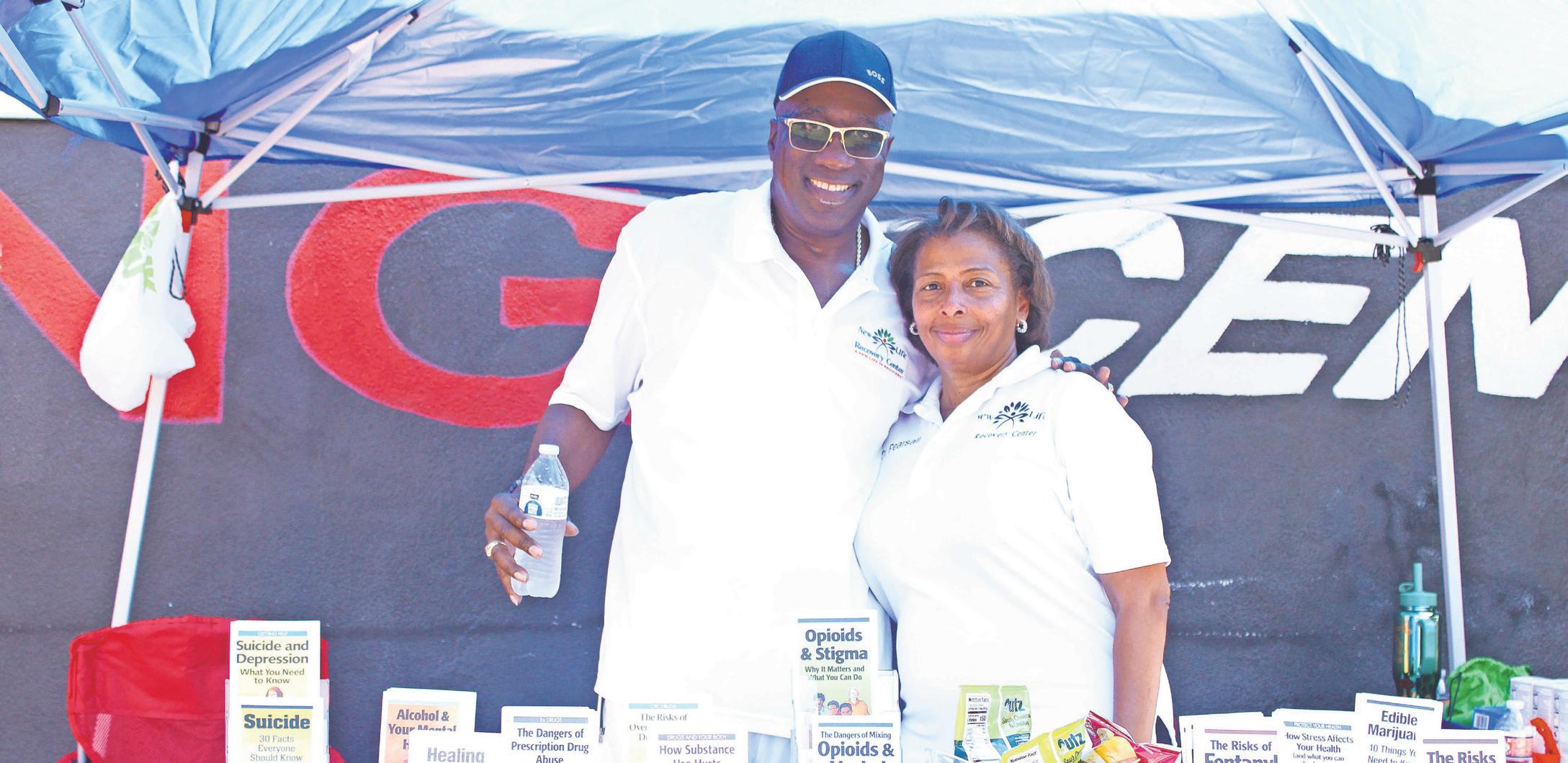
“It’s an everyday struggle living in a food desert and dealing with the anxiety that comes with it,” said Xi-Amaru.
Abdullah’s death sparked protests on June 20, with many visibly upset by the shooting death. As emotions have been running high in the neighborhood, mental health and addiction were also addressed at the event.
UPLIFT supplies critical gap financing to not-for-profit and for-profit developers to build quality housing that is also affordable. Habitat for Humanity of the Chesapeake, a nonprofit homebuilder entity, will receive $1.25 million to help improve development in the community. This investment in turn will help create 27 new three bedroom, one and a half bathroom homes.
“We now have a president of the United States who is unapologetically divesting from Black and underserved communities, actively and intentionally dismantling minority business programs and banning books about our history, ” said Moore. “We are going to show that there is in fact an alternative.”
Moore touted the state’s ability to secure $1.3 Billion for Historically Black Colleges and Universities (HBCUs), which is an increase of nearly 60 percent in funding.
“In our time we have delivered more than $800 million in state contracts to Black owned businesses,” said Moore.
Moore emphasized that the launch of UPLIFT is not the end of a conversation, but a promissory note that state and city leaders are just getting started.
“I’m honored to be able to share this moment with you all,” said State Sen. Cory
“There are a host of people who are still struggling with the death of Freddie Gray–they are traumatized,” said New Life Recovery Center Director and addiction survivor of 25 years, Vennieth McCormick. “Oftentimes, folks don’t realize that after
all of this trauma, they are now dealing with a mental health illness.”
McCormick was pleased to see City agencies respond to the incident with resources for those who live in the area and were impacted by the shooting.

McCray (D-Md.-45). “This is a long day coming, because I can remember running up and down here as a teenager. I can remember what it used to look like, but I’m still allowed to be able to see it meet its potential and see what it can be.”
“I ran for office because I saw my city crawling, and now I’m starting to see it running,” added McCray.
Baltimore City Councilman Antonio “Tony” Glover (D-District 13) echoed

McCray’s sentiment, another legislator that grew up in East Baltimore.
“At times it was hard to come to this neighborhood, because of the issues that plagued most parts of our neighborhoods,” said Glover. “But Guess What? There’s a new day. There’s a new time, and I want to thank Governor Moore for all you have done for our city. You’ve led by example…we have not left this community behind.”
From checking and savings accounts to business loans and guidance, our team has faithfully supported your financial journey, and we’re here for your family, your friends, and your future.
Move Forward With Us™
Learn more today! Visit us at theharborbank.com or one of our branches throughout Baltimore.
“It’s good to see the mayor is doing something for the community right away,” continued McCormick. “I’m just grateful that the city is listening.”
An investigation by the Maryland Attorney General’s Office is underway.
Continued from A3
Meeting
The launch of the Institute comes as Baltimore stands at a pivotal crossroads. Generations of disinvestment have taken a toll, but Carter believes the strength and brilliance of Baltimore’s people remain unmatched. She sees the Institute as a space for supporting that brilliance—not to take the spotlight, but to help amplify it.
“This is about standing with Baltimore’s communities—not just talking about change, but building it together, from the ground up,” she said.
Carrying Walter P. Carter’s legacy forward Walter P. Carter remains one of Baltimore’s most significant figures in the fight for equality and dignity. His leadership in the 1960s helped break down segregation and forced the city to confront its injustices. His legacy is not just one of protest, but of building institutions and movements that served everyday people.
For Carter, the Institute continues that tradition, grounded in the belief that community comes first.
“We have the people, we have the talent, we have the heart,” Carter said. “What we need is more unity, more collaboration, and more spaces where we can build together.”
Details on programs, events and ways to connect will be announced in the coming weeks.
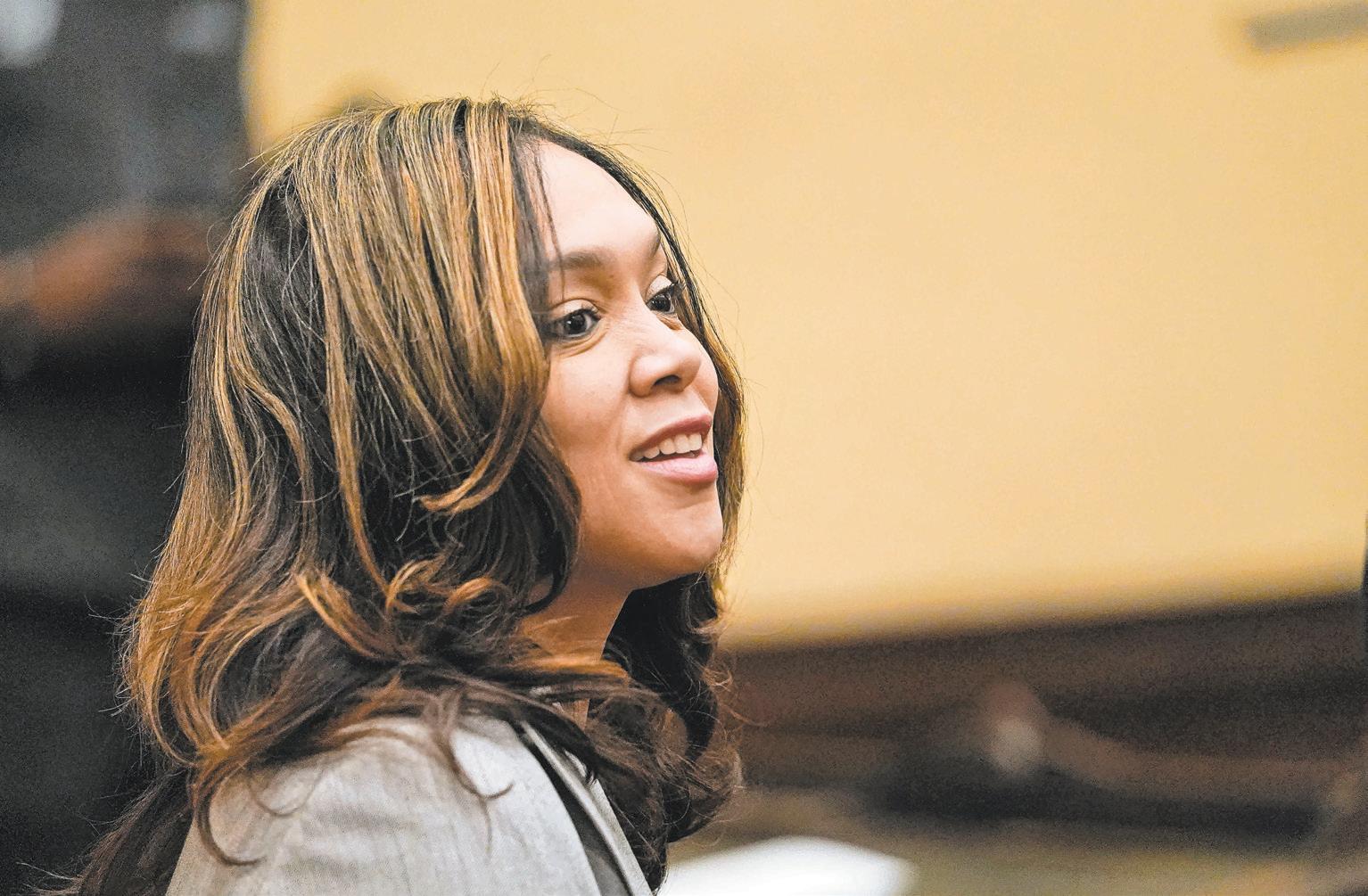
Continued from A3
Mosby said now that she has her freedom back, she will continue to press forward with her plans to make change.
“Now that I have finally regained the power and the right to act, speak and think without hindrance or restraint, they better watch out. This past year was merely separation and preparation for God’s elevation,” she said. “I am the dream and the hope of the slave. You are the dream and the hope of the slave. We are the dream and the hope of the slave. And it’s time for us as Black people in this nation to rise, unify, strategize and implement a Black agenda that will radically protect, provide
for and advance our communities.”
In a follow-up interview with AFRO on June 24, Mosby reflected on life after house arrest, saying her main focus is rebuilding for herself and her daughters.
“It’s just a matter of rebuilding my life and trying to move forward for the sake of me and my two little girls,” she said.
“We not only survived–but we’re thriving, despite those that tried to break me under many different respects– psychologically, emotionally, financially.”
Mosby added that she plans to continue advocating for the causes that defined her public service.
“I’m going to continue to fight for the causes that matter, especially in this day and age where regression is being touted as ‘making America great again,’” she said.
The AFRAM Festival returned to Baltimore June 2122, with some of the biggest stars in the music business gracing the main stage. The annual festival, which celebrates African-American culture, offered attendees some of the city’s best cuisine while showcasing Black excellence through art, fashion and culture.
AFRAM began in 1976 as part of Baltimore’s Showcase of Nations and now serves as the city’s official Juneteenth celebration. The free festival was held in Druid Hill Park, with over 150,000 people attending day one of the festival. Festival attendees spread blankets on the lawn, and pitched tents to beat the heat while they waited for international artists like Amerie, Patti LaBelle, Juvenile and Teedra Moses to hit the main stage.
“We know what AFRAM is: it is a celebration of everything that is Black excellence,” said Mayor Brandon

M. Scott. “It’s one of the largest festivals on the East Coast dedicated to Black history and culture.”
Scott said “because of the state of the world” the festival returned “loud and even Blacker this year to remind everybody that–no matter how hard they try to erase us from the history books–they can’t erase us.”
All photos courtesy of the Baltimore City Office of the Mayor / J. J. McQueen
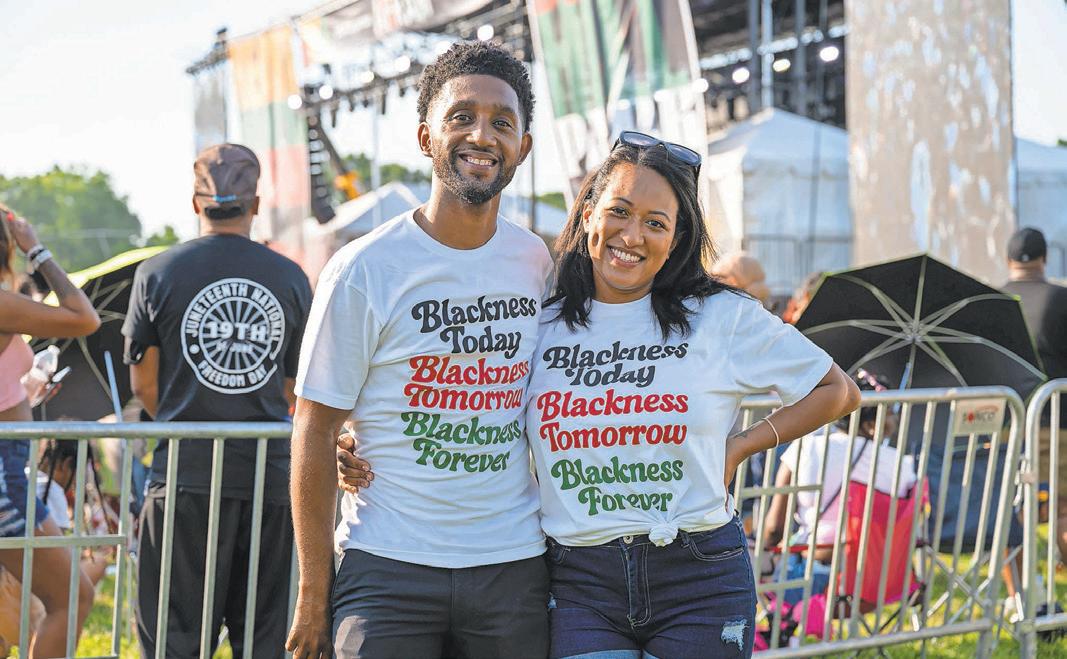



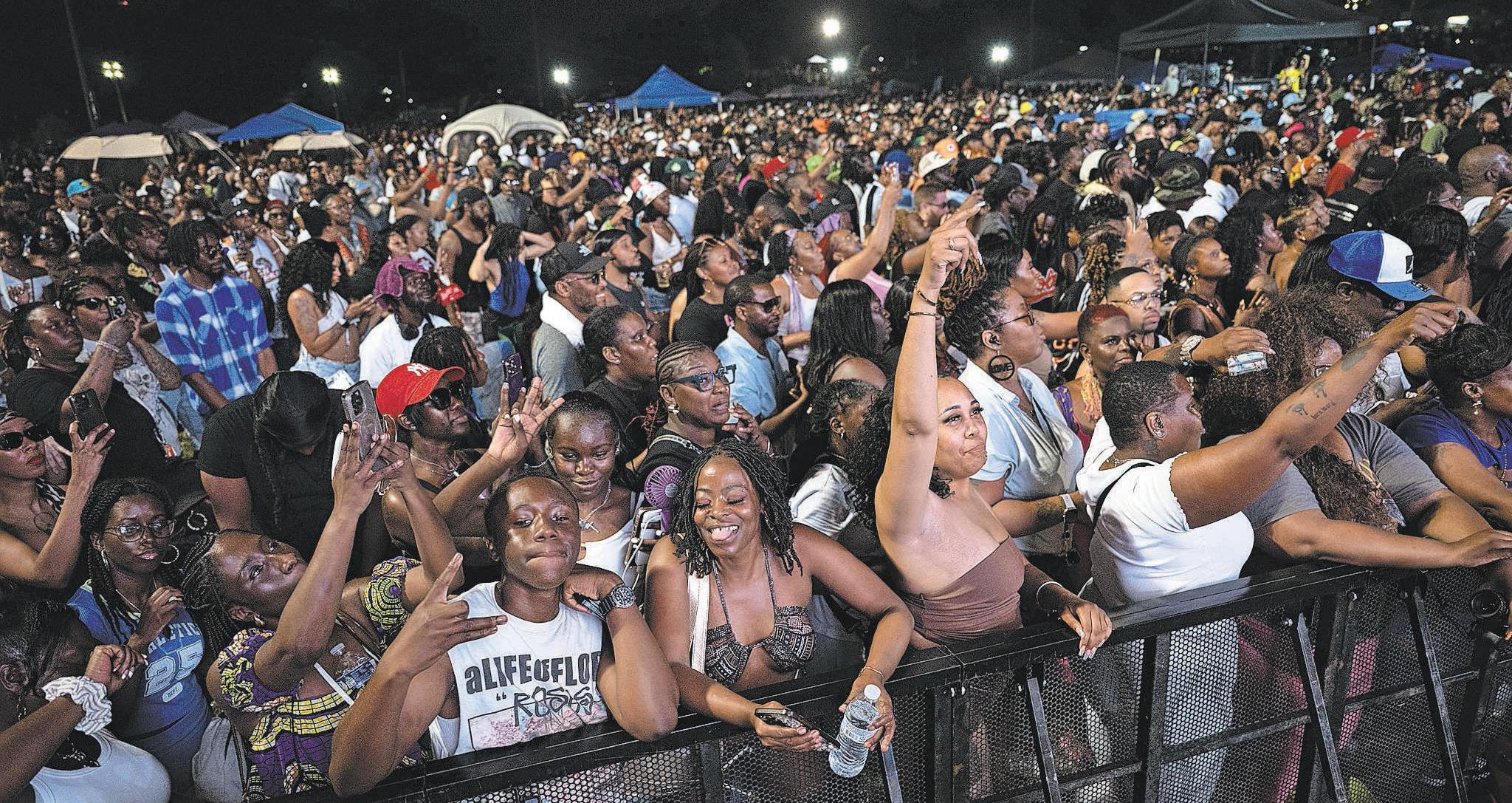
By Ali Halloum
The Women’s Challenge Inc., in conjunction with Live Inc., recently hosted their annual Daddy and Me Tea. On the afternoon of June 21 men of all ages arrived at 25 W. Preston Street in Baltimore for an afternoon of fun with their daughters. This ball provided an opportunity for Black fathers and daughters to bond as they enjoyed a photobooth, games, dancing and more. AFRO
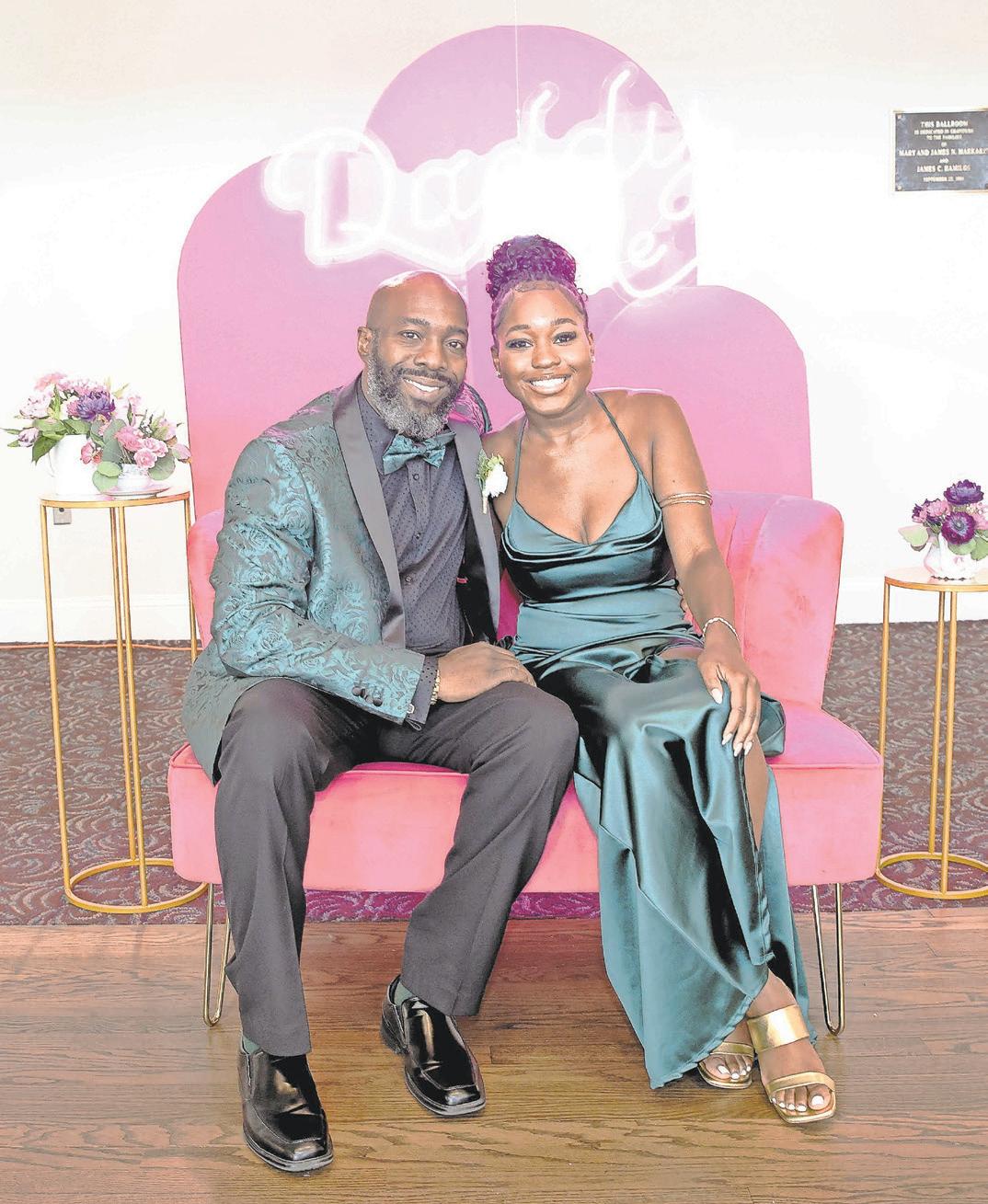

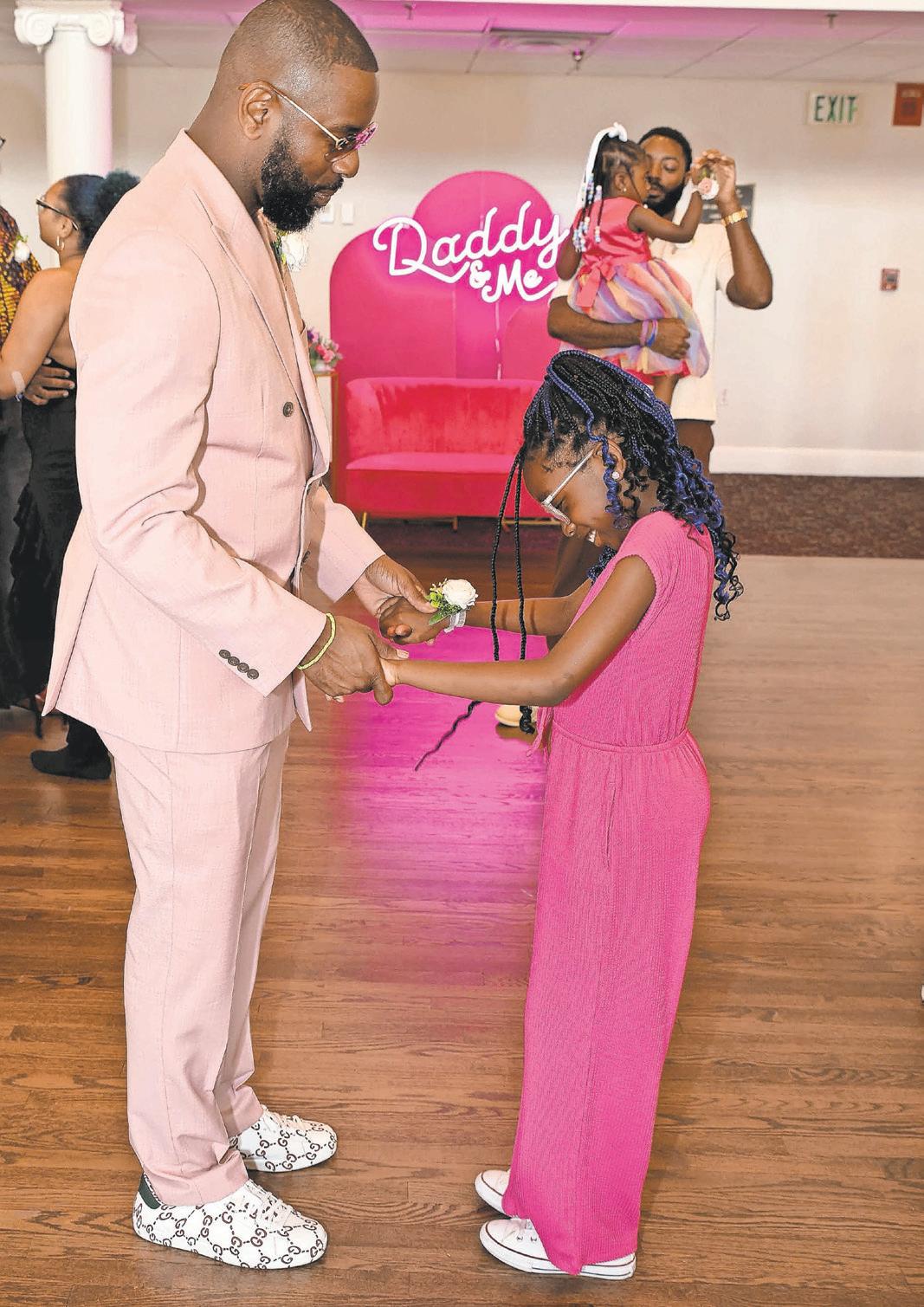

By Tashi McQueen AFRO Staff Writer tmcqueen@afro.com
D.C. Mayor Muriel Bowser (D) kicked off the 46th annual Mayor Marion S. Barry Summer Youth Employment Program (MBSYEP), one of the nation’s longest-running summer youth employment programs, on June 23. The
program works with District youth from ages 14 to 24.
“For 46 years, the Marion Barry Summer Youth Employment Program has been an important tool for not only keeping teenagers engaged throughout the summer, but helping them meet mentors, learn new skills and earn money,” said Bowser in a statement. “I’m proud
of the young people who are starting at their placements this week and I’m grateful for all the host organizations that will make this summer a meaningful experience for our youth.”
MBSYEP works alongside hundreds of employers to connect thousands of young people with opportunities to earn money over summer
break while exploring potential career paths and building skills that will prepare them for a successful career.
This year, the program is expected to serve around 13,000 youth, while over 700 organizations have enlisted as host sites.
Another program that
Continued on A7
By Elijah Qualls
Mayor Muriel Bowser unveiled the newly renamed Mamie “Peanut” Johnson Plaza on June 2 in remembrance and celebration of the first and only female pitcher in the Negro Leagues, Mamie “Peanut” Johnson.
With the assistance from the District Department of Transportation (DDOT) and NoMa Business Improvement District (NoMa BID), Mayor Bowser was able to provide $41 million worth of improvements. The once congested and unsafe intersection of Florida Avenue Northeast, Eckington place Northeast, and First street Northeast has now been altered to simplify traffic patterns, protect cyclers and pedestrians and introduce three public parks. This new development also allows for easier transit between the surrounding communities.
“This design has been a long time coming,” Mayor Bowser said. “This area of our city has been growing quickly, and we had to make sure our infrastructure kept up with that growth.”
DDOT Director Sharon Kershbaum acknowledged
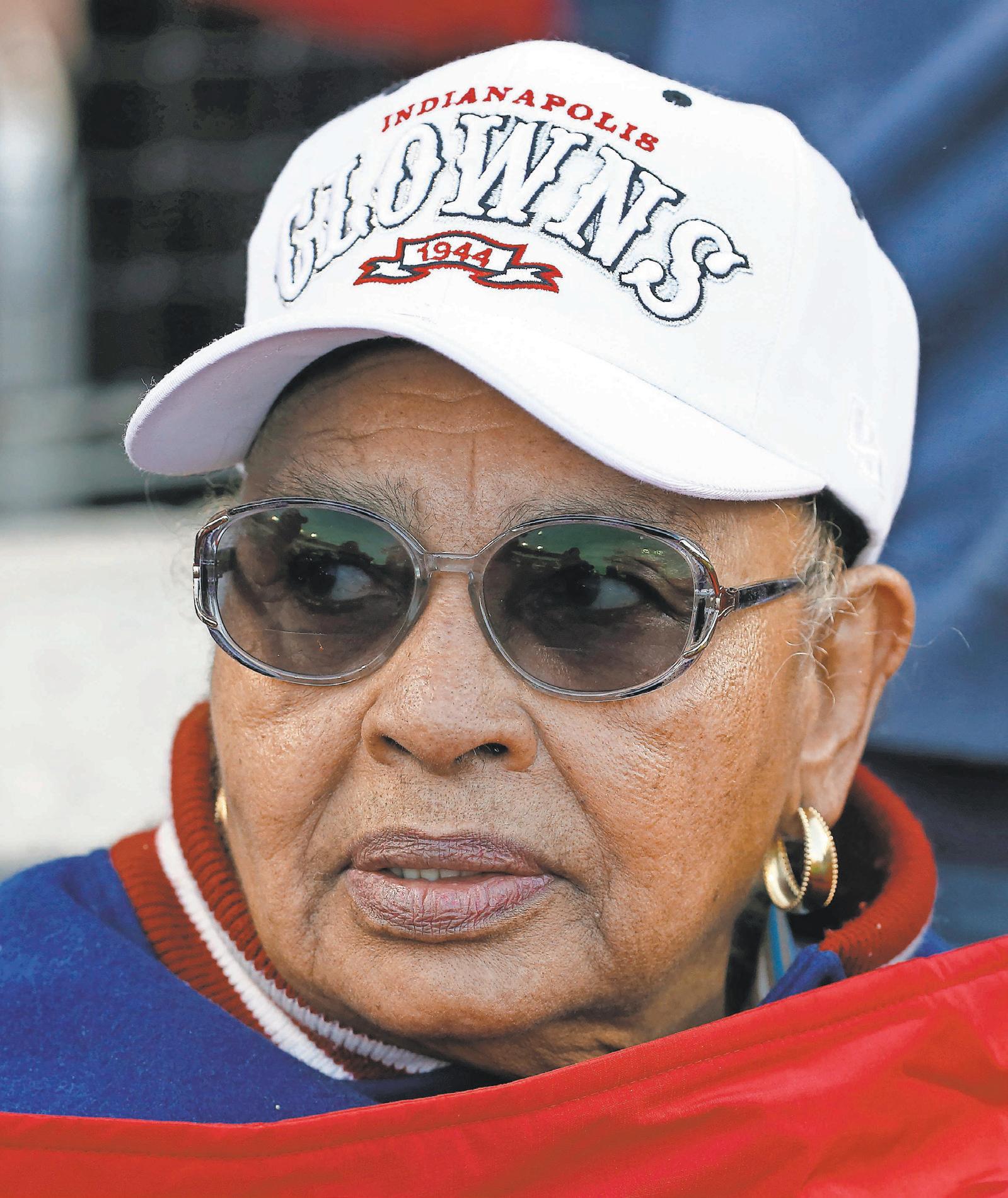
“For
46 years, the Marion Barry Summer Youth Employment Program has been an important tool for not only keeping teenagers engaged throughout the summer, but helping them meet mentors, learn new skills and earn money.”
By Ali Halloum AFRO Interns
Amid ongoing immigration crackdowns by Immigration and Customs Enforcement (ICE) agents, faith leaders of every denomination are calling for action. On June 8, the 47th president federalized the California National Guard to quell protests against ICE raids, over the objection of Governor Gavin Newsom. The agency has detained individuals outside of churches, courthouses and schools, due to a January 21 directive by the Department of Homeland Security (DHS), allowing ICE to enter what it calls “sensitive areas.” The AFRO spoke with Reverend James Tait, pastor of the Village Church in Washington, D.C. about the duty of faith leaders when it comes to protecting immigrants at risk. Tait has been a member of the strategy team for the Washington Interfaith Network

(WIN) for seven years. Tait said that when cruelty masquerades as policy, faith organizations in the WIN
Continued from A6
Mayor Bowser’s pivotal role in the improvements.
“Thanks to Mayor Bowser’s leadership and sustained investment in critical infrastructure, these projects transform a once-chaotic intersection into a corridor that supports all modes of travel while creating new green spaces for these communities,” she said.
According to NoMa BID’s website, the Mamie “Peanut” Johnson plaza includes ample green space, but also provides areas for public art to be displayed. Local residents were able to provide their input and vote on the historical name honoring the baseball legend.
Mamie “Peanut” Johnson, born on September 27, 1935, was one of three women to ever play and the only one to pitch in the Negro Leagues. According to reporting in AFRO reporter Kevin Wilson’s article published in 2002, titled “Mamie ‘Peanut’ Johnson, a Negro League Legend”, Johnson earned her nickname after striking out a player for the Birmingham Black Barons who said she was too small – the
size of a peanut – to strike anyone out. She proceeded to do just that on him and the nickname’s irony stuck. Following her time in the league, Johnson was recognized through awards and an invitation to the White House from former President Bill Clinton. Beyond that, she went on to be a nurse for 30 years and raise her son. Though she passed away on December 18, 2017, her tales continue to be sung and eternalized through projects such as this.


This project is a part of a much larger mission for Mayor Bowser, who is carrying out her third consecutive term as mayor and making history as the first African-American woman to ever be elected for a third four-year term in an American city. Over the past 10 years, Bowser’s administration has repaved and amended over 1,200 miles of roads and sidewalks, constructed over 50 miles of bike lanes, and provided 13 more miles of bus lanes.
Mayor Bowser is continuing to advocate for more transportation projects like the Mamie “Peanut” Johnson Plaza. In her Fiscal Year of 2026 Budget Proposal which she presented a week prior to the plaza unveiling, Bowser pushed for longterm investments of infrastructure that will uplift the Washington, D.C. community.


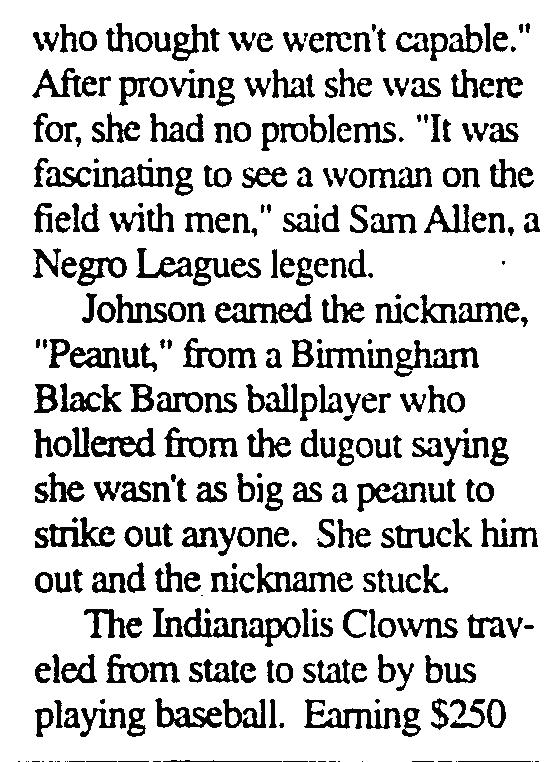
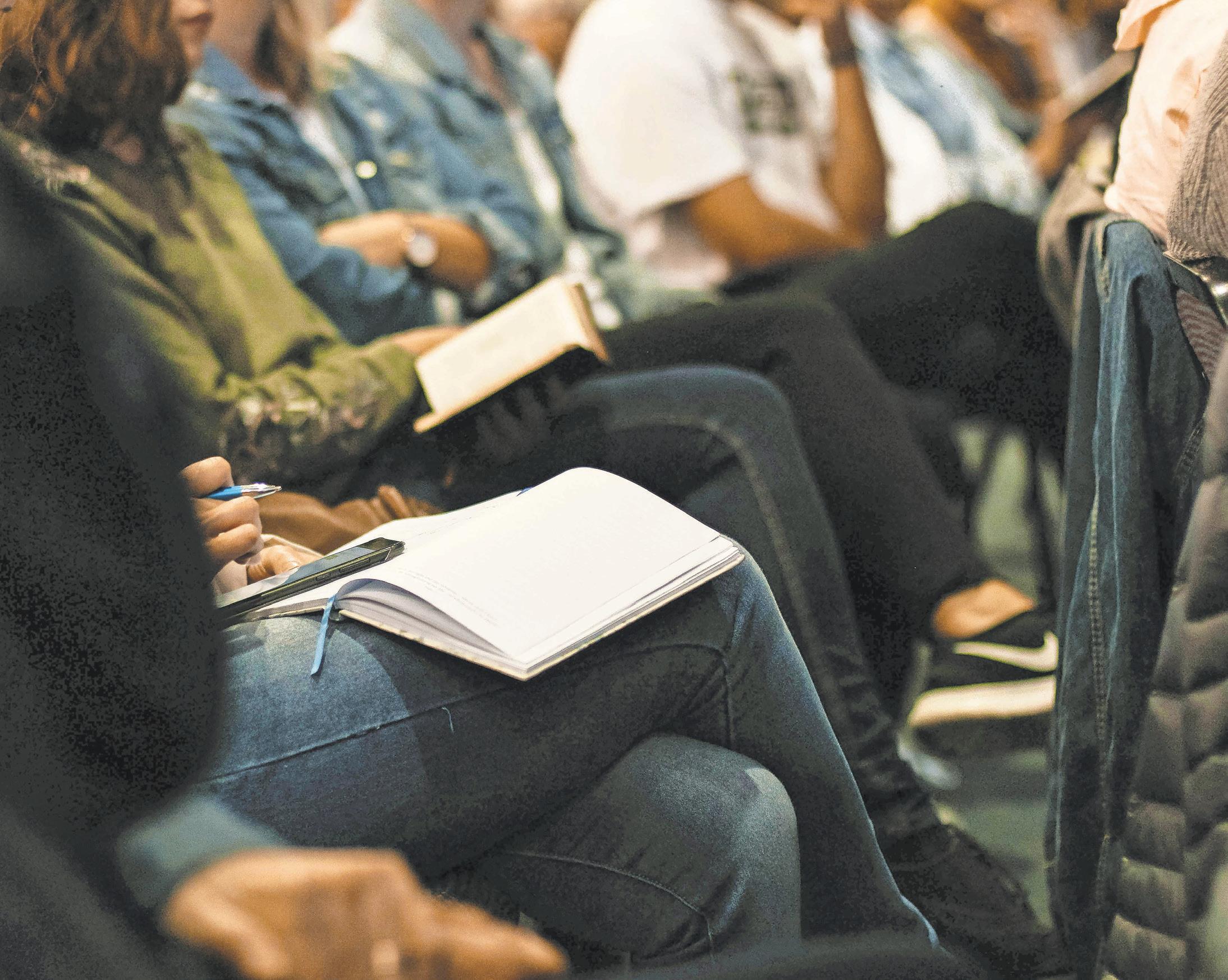
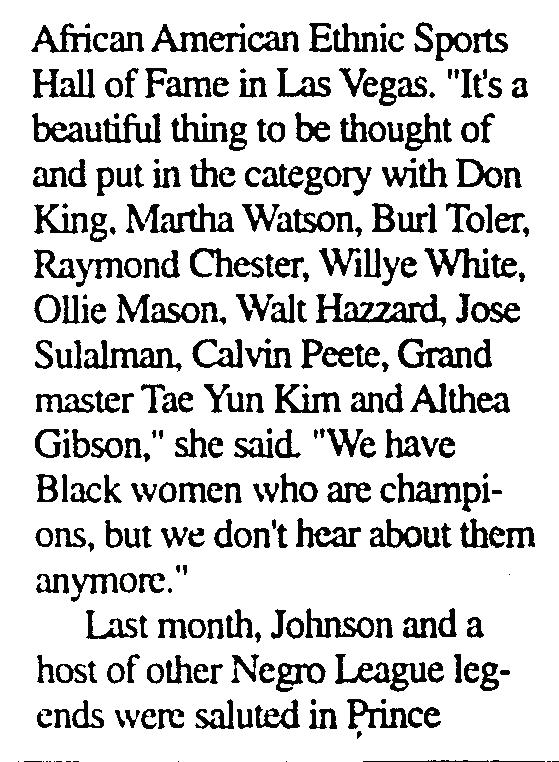
Continued from A6
must stand with immigrants and “lift our voices in holy protest.”
“We say unequivocally that no child should be snatched from their mothers arms in the name of national security,” Tait said. “The Washington Interfaith Network stands in solidarity with immigrant communities across the country, from east of the river in D.C. to Central California’s migrant camps.”
According to Tait, WIN is a “power building” organization that represents 45 churches, mosques, synagogues, community organizations and labor unions in the District.
He said that as an African-American clergyman, he is especially aware of the “dangerous dance” between racism and immigration policy in the United States, noting the similarities between ICE’s “surveillance and criminalization of immigrants” as part of the same system that is overpolicing Black communities and “chokes justice at every turn.”
“We see ICE for what it is: a tool of state violence,” he said. “We see Trump and hear his rhetoric for what it is…the same hate that once haunted our ancestors.”
Tait told the WIN is calling for a “nation wide sanctuary campaign” in houses of worship, noting that “the story of immigrant struggle is down to the story of Black liberation.”
is tied into that youth will engage in this summer is the Marion Barry Youth Leadership Institute, which provides young people with opportunities to build their skills and become future leaders.
“My leadership journey began right here at the Marion Barry Youth Leadership Institute in the summer of 2021,” said Judith Iweanoge, the 2024-2025 D.C. Youth Mayor, at the press conference. “Since then, I have had the privilege of serving in various roles. From Ward 5 councilmember, to youth at-large councilmember and as chairperson…this program has played a pivotal role in shaping my leadership skills and providing me with meaningful opportunities to grow and contribute to our community.”
Bowser also celebrated the third year of Career Ready Early Scholars Program (CRESP), which serves District youth ages 9 to 13, giving them the opportunity to participate in age-appropriate curriculum and activities that allow them to experience an array of college and career pathways and develop essential life skills.
“For decades, the Mayor
Marion S. Barry Summer Youth Employment Program has given D.C. youth a fair shot at success, and for the past three years the Career Ready Early Scholars Program has ushered our youth into imagining their future through work and I’m thrilled about what’s ahead,” said Unique Morris-Hughes, director of the District of Columbia Department of Employment Services (DOES) in a statement. “Each summer, thousands of young people gain valuable work experience, life skills and career exposure. This year, we’re deepening that impact and launching the new Pathways to Finance Grant, which will open even more doors in the finance industry for our young people.”
The Pathways to Finance Grant, which is supplied through DOES’ Office of Youth Programs, is a unique learning experience for high school students in the District, ages 16 to 18. Over six weeks, grantees will host students who will engage in internships and career exploration in fields such as accounting, economics and risk management. Students will then get to travel to universities and shadow professionals on the job at leading financial firms.
For further information about MBSYEP and CRESP, go to summerjobs.dc.gov.

“Their tears are our tears,” he said. “Their chains are our chains and their freedom is tied to our own.”
The National Immigration Law Center advises centers of worship to “clearly delineate” which areas of their build ings are public and which are private or open only at certain times. They also advise that congregations choosing to label themselves as “sanctuaries” need to know the protections afforded to them under the Religious Freedom Reform Act (RFRA). Passed in 1993 and signed by President Bill Clinton, the RFRA prohibits the United States Government or any of its agencies, including ICE, from “substantially burdening a person’s exercise of religion.”

By Deborah Bailey AFRO Contributing Editor
Aisha Braveboy held her own Juneteenth celebration as she was sworn in as Prince George’s County’s 10th executive at her alma mater, the University of Maryland-College Park on June 19. Surrounded by a large crowd that included actor Taraji P. Henson, Gov. Wes Moore, faith leaders, local politicians, family and supporters, Braveboy received the oath of office in a festive event featuring speeches, music and messages of encouragement.
Braveboy set a tone of openness and inclusion, saying she would welcome the contributions of county residents and her peers in Maryland state government and the County Council.
“I will be open, I will be transparent and I will ask for your ideas. I should not and I will not be the only one with good ideas,” Braveboy emphasized.

“To the residents of Prince George’s County: We will have regular town halls because we have the most brilliant people anywhere in America here in Prince George’s County,” Braveboy added. One of her most important collaborators, Gov. Moore, thanked Braveboy for being one of the first elected officials to endorse his candidacy for governor in 2022. He returned the favor in supporting
Braveboy’s candidacy for Prince George’s County executive in a crowded Democratic primary in 2024. Moore opined that Braveboy is the right choice for the historic challenges before the nation, Maryland, and Prince George’s County.
“The challenges we’re facing are enormous. In this moment with so much on the line, we need County Executive Aisha Braveboy,” Moore said. “She doesn’t just understand the gravity of this moment, she understands the gravity of the assignment.”
Academy Award nominated actor Taraji P. Henson stopped by to encourage and connect with Braveboy and visit her home county, where she has recently initiated a youth mental health program with Prince George’s County public schools.
“I’m excited for our future. I’m excited for our partnership and Queen, I’m just proud of you,” Henson enthusiastically stated. Henson recently visited Oxon Hill High School to speak with youth about mental health. Her foundation, The Boris Lawrence Henson Foundation, founded in 2018, will fund an expansion of the program, bringing mental health programs to additional schools in District 8 of the county.
The tribute to Braveboy went to a new level for a government inauguration when the new county executive’s Sigma Gamma Rho sorority sisters took the stage, reciting chants from the sorority song book. As they sang “I Love my Blue and Gold,” each woman lay a gold rose on the stage. Braveboy plans to announce a 100-day plan for her administration soon. She gave plenty of hints in her acceptance speech, however, mentioning keeping streets clean, uniting county government, bringing the new FBI headquarters to the area, increasing support for local businesses, and making sure public schools are open to the community.
“I will be open, I will be transparent, and I will ask for your ideas. I should not and I will not be the only one with good ideas.”
building bulletin: As summer sets in, the
It was amidst a deadly spike in violent crime in 2023 that the D.C. Council passed an emergency bill that made it easier to keep people accused of committing violent crimes in jail as they await trial. There was a catch, though – lawmakers required that a study be conducted on whether expanding pretrial detention actually makes a difference on public safety, with the expectation that actual data would help them decide whether to make the expansion permanent or not.
Well, the data is in – and it’s somewhat inconclusive. Still, on June 17, the council moved ahead with an initial vote to make the expansion of pretrial detention permanent, even as some lawmakers expressed concern that they were largely flying blind on a criminal justice policy change that would disproportionately impact Black residents.
The debate came amidst consideration of Ward 2
Councilmember Brooke Pinto’s PEACE D.C. public safety bill, which she introduced this spring as a follow-up to her Secure D.C. crime bill the council passed in March 2024. While there were a variety of components to Pinto’s newer bill, much of the discussion this week centered on the expanded pretrial detention, which was set to expire in mid-July if the council didn’t act.
“The police think it’s a very helpful tool,” Pinto told reporters about expanded pretrial detention, which shifts the burden onto suspects of violent crimes to prove that they can safely be released from jail before they stand trial. (Under the prior system, judges had to determine that keeping the person in jail was the only credible way to keep the community safe and ensure the defendant shows up for trial.)
Pinto also said she finetuned the bill to focus only on the most violent offenses,
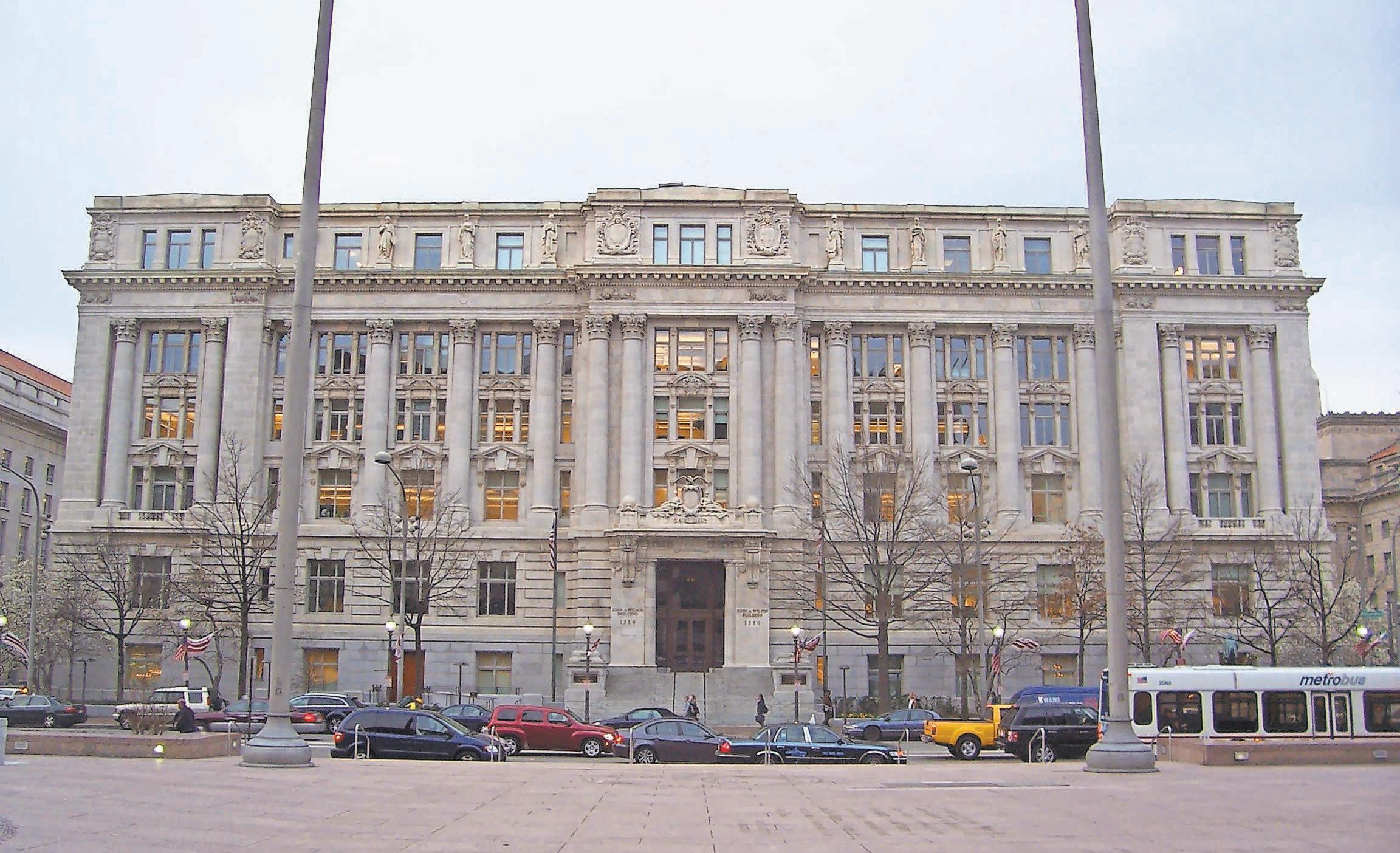
including removing robbery when no injuries occur and second-degree burglary (when a home is broken into but the owner isn’t around, for example) from the offenses that would qualify for expanded pretrial detention.
Bowser expressed strong support for Pinto’s bill, writing to lawmakers that expanded pretrial detention has been “critical in helping reduce violent crime in the District.”
“In 2024, we reduced violent crime by 35 percent and, so far this year, we have reduced violent crime by a further 22 percent. As of June 16, 2025, violent crime in the District is 43 percent lower than at the same time in 2023 – before the emergency version of the bill was enacted. Holding violent criminals accountable for their actions is having a clear impact in making our city safer and this legislation will allow us to continue making use of this critical tool,” she wrote. But how clear is that impact, really? It’s tough to say. In May, the council-commissioned study by the Criminal Justice Coordinating Council offered few strong conclusions and noted that it
wasn’t able to determine if expanded pretrial detention had made D.C. safer. (It also only looked at adult arrests, not those involving juveniles.) Like Bowser, Pinto argued correlation; after the council first expanded pretrial detention in the summer of 2023, she said crime rates decreased somewhat. But that wasn’t enough for some of her colleagues.
towards justice, and to me the pretrial detention component … does the opposite.”
At-Large Councilmember Robert White and Ward 4 Councilmember Janeese Lewis George also pointed to an assessment conducted by the Council Office of Racial Equity, which found that expanded pretrial detention “will exacerbate the harmful consequences of detention and imprisonment
“The reality is that there really doesn’t appear to be any evidence that the pretrial detention component is making the city safer.”
“The reality is that there really doesn’t appear to be any evidence that the pretrial detention component is making the city safer. That’s the issue I have. I can’t tell you that it’s making us less safe either,” said At-Large Councilmember Kenyan McDuffie. “But my core is to bend the moral arc
for Black residents — particularly around community safety, health outcomes and wellbeing outcomes. Importantly, this provision will have an outsized impact on Black residents.”
“What frustrates me is there are things that we know most of us would not debate. We know that people of color,
Black people, are not born more criminal, and we know that many more Black people are in jail,” said White. “We always seem to have time and resources to address how to get folks in jail more quickly, but we’ve never seemed to prioritize the more difficult things I’m saying: Why are there more Black people in jail and what do we need to do to get underneath that? Instead, we keep adding on to this very broken system that is increasingly pushing people of color into incarceration and doing it not with the data, but with these notions of what is going to help even when there’s no data to support so.”
Despite those concerns, Pinto’s bill passed on a first vote, with only White and Ward 1 Councilmember Brianne Nadeau voting against it.
(McDuffie and Lewis George voted “present,” which is neither “yes” nor “no.”) It will get a second and final vote in July.
Bowser proposes expanded youth curfew
Back over Memorial Day weekend, The Wharf made one thing clear: Teenagers weren’t really wanted around. In response to complaints of marauding groups of juveniles the week prior, the waterfront destination imposed a tight three-day curfew prohibiting anyone under the age of 18 from being there after 5 p.m. without a parent or guardian in tow.
That type of curfew may well become much more common across D.C. this summer.
This week, Mayor Muriel Bowser introduced an emergency bill to tighten up the city’s existing youth curfew, largely over growing concerns of teenagers gathering in large numbers in nightlife hotspots and causing trouble. (Navy Yard and U Street have been recent targets.) Her bill brings the curfew back an hour (to 11 p.m., from the current midnight), and extends it to anyone under the age of 18 (the curfew now applies only to kids under 17).
But her proposal also includes a novel twist: designated curfew zones that can move across D.C. where kids aren’t welcome even earlier into the evening. As laid out in her bill, D.C. Police Chief Pamela Smith would be empowered to designate the new juvenile curfew zones for 15-day stretches at a time, where any group of more than three kids under the age of 18 wouldn’t be allowed to gather after 7 p.m. Sound familiar? The idea is based off D.C.’s drug-free zones, which were created last year as part of a push by Bowser to give police more tools to crack down on crime.
Bowser’s bill would also grant her the power to extend the overall juvenile curfew for 30 days at a time, requiring that anyone under the age of 18 be home from 7 p.m. until 6 a.m. D.C.’s juvenile curfew law has been on the books since the mid-1990s, though its application and enforcement has ebbed and flowed depending on real or perceived public safety risks. In the past few years, city officials have tested new approaches to enforcing the existing curfew in response to a rise in juvenile crime; two summers ago, police ramped up enforcement in eight neighborhoods. Similar attempts have been on display in Prince George’s County, where last year an extended youth curfew was imposed at National Harbor, another popular gathering location for kids.
Research has generally shown that youth curfews don’t have a significant impact on public safety, and youth have often said that curfews are less useful than other proactive measures like additional programming for kids during the summer months – including during evening hours. To that end, this month, the D.C. Department of Parks and Recreation launched an expanded series of Late-Night Hype events for youth.
A vote on Bowser’s emergency curfew bill is expected on July 1.

By D.C. Representative Oye Owolewa
President Donald Trump carried out an unconstitutional act of War on June 21 without Congressional approval. For this reason, Congress must launch an impeachment inquiry.
We Americans have been lied to for the past couple of decades. We have been told that the United States couldn’t afford free college education or student loan forgiveness. We’ve been told that we cannot afford a federal living wage so Americans can live with dignity. Our leaders scoff at the price tag of Medicare for All and other methods to make healthcare more affordable. Yet somehow, we are able to afford a war that would cost more than these initiatives combined. Instead of positively impacting American lives with popular investments, President Trump has served the military industrial complex and special interests by pushing the United States to the brink of a World War. D.C. must stand up against this. Lacking statehood, Washingtonians are forced to fund wars without having the ability to vote for it. Lacking statehood, Washingtonians are forced to fight in wars without having a say. Taxation without Representation is no longer just a slogan, but forced complicity. DC Statehood is only our path forward to true independence and full self governance.

By Sen. Cory McCray
When I was growing up, my world was small. Like many of my peers in Baltimore, I saw opportunity only as far as my neighborhood reached. It wasn’t until my mother introduced me to an electrical apprenticeship that my vision of what was possible began to shift. That opportunity reshaped my future and expanded what I believed was possible.
Anyone who knows me has heard this story. I share it again because the lesson remains urgent: exposure, mentorship and opportunity can be the difference between a life of limitation and a life of purpose.
That same truth is on display today at Gardenville Elementary School in Northeast Baltimore. Like many schools in historically disinvested neighborhoods, Gardenville serves students facing compounded challenges. More than 80 percent live in poverty, and the school’s small K-5 enrollment often translates to fewer resources. That means limited access to the kinds of programs that spark confidence, creativity and critical thinking.
In this context, even essentials like art, music and library time are offered only parttime. These aren’t extras— they’re vital opportunities for students to express themselves, explore the world and discover new pathways to success.
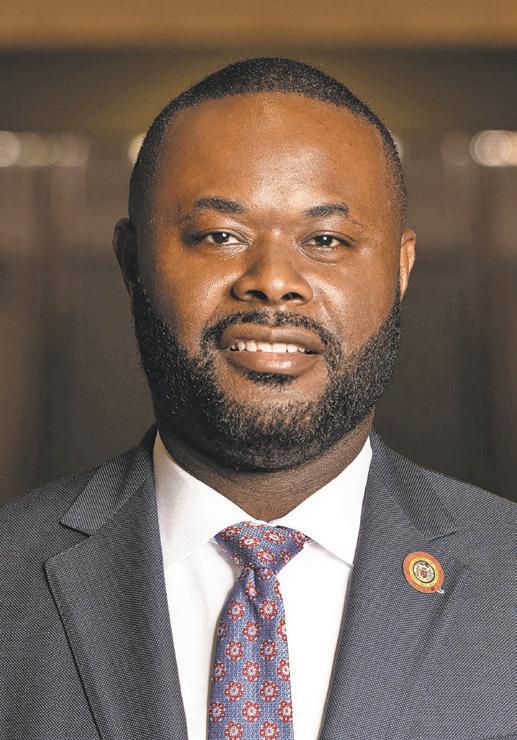
Cory V. McCray represents Maryland’s 45th Legislative District in the State Senate. This week, he examines how a dance partnership at Gardenville Elementary in Baltimore increased mentorshipship opportunities and creative expression for students in underserved communities.
Proximity played a big role. The Carroll School of Dance is just blocks from Gardenville. Some of Macee’s dancers already attend the school. When Harvey Miles,
proud to secure in the state budget—the Carroll School of Dance now serves nearly 230 young scholars twice a week—blending dance with academics, and giving students a powerful outlet for expression.
Because Baltimore City Public Schools doesn’t currently offer a dance curriculum, Macee and her team built one from scratch— weaving together technique, history, and leadership development. The impact is tangible.
Gardenville shouldn’t be the exception. Every school in Baltimore deserves access to innovative partnerships like this one. We can’t allow school funding formulas to dictate whether a child has access to the arts, to mentorship, or to possibility.
My apprenticeship journey taught me that exposure isn’t a luxury—it’s a lifeline. And now, this partnership between Gardenville Elementary and the Carroll School of Dance is proving it all over again. When we invest in expo-
bombing of Iran by the 47th president of the United States.
All in all, we must all stand up against Trump’s recent illegal and provocative bombings. Trump 2.0 lacks the support from American people to engage in war, the funds to carry out a war and the constitutional legality to attack Iran without congressional approval. For all reasons
stated, Congress should ultimately draft articles of impeachment against President Trump. “They got money for wars, but can’t feed the poor…”
2Pac Shakur, Keep Ya Head Up (1993)
That’s where leaders like Macee Carroll Capel step in—turning gaps into gateways. Macee, founder of the Carroll School of Dance, has been nurturing young dancers across Baltimore for over 13 years. She understands that dance education is about mindset. It builds self-discipline, confidence, cultural awareness, and teamwork.
“...the lesson remains urgent: exposure, mentorship and opportunity can be the difference between a life of limitation and a life of purpose.”
Gardenville’s School Community Coordinator, recognized the need for more enriching programs, we worked together to bring Macee’s vision inside the building. Thanks to support from the Family League of Baltimore—and funding I was
sure, we invest in the next generation of leaders, artists, and changemakers. That’s the power of exposure. That’s the promise of partnership. And that’s how we build the Baltimore our young people deserve.
By
In underserved communities across America, opportunity is not just a path to success but a lifeline. For countless at-risk youth, access to vocational training, stable housing and mentorship can mean the difference between building a future and falling through the cracks.
Many young people enter programs like Job Corps because they already feel discarded. They come from homes marked by instability, foster care, or homelessness– environments that offer few chances and even fewer champions. For them, Job Corps was never just a program. It was an anchor of hope. It was a second chance they did not believe they would get.
Too often, our society tells youth to “stay out of trouble” while offering no roadmap forward. Programs like Job Corps provided a rare and powerful alternative in communities where the school-to-prison pipeline is more visible than the path to
higher education or employment. They reminded youth that they are not destined to fail and that something is still worth fighting for.
That is why the abrupt suspension of all 121 Job Corps centers in May 2025 was more than a bureaucratic decision. It was a betrayal.
The U.S. Department of Labor cited financial constraints and restructuring goals, but the message was clear for over 25,000 low-income youth. Even systems designed to help them can disappear without warning. Students were displaced without notice, left scrambling for housing, and disconnected from vital support networks. In New Haven, Connecticut, 149 students lost access to critical services. In Texas, the Gary Job Corps Center, the largest in the nation, shut down, displacing 1,400 students and 500 staff. For many, it was not just the loss of a program. It was the loss of safety, stability, and belief in possibility. This is not just a policy failure. It is a trauma. When youth are abandoned
midstream, without housing, guidance, or continuity, it reinforces a dangerous message: that they are disposable. That their lives, dreams, and futures do not matter.
The truth is that these young people already come from systems that have failed them. From underfunded schools to racialized discipline practices, from unstable housing to juvenile detention, the road from the classroom to incarceration is well-worn and difficult to escape. For many, Job Corps was the first time anyone told them, “You matter. You can build a life.” Losing that is not just unfortunate. It is devastating.
If we genuinely care about youth resilience, we cannot keep placing it on the shaky ground of unreliable federal programs. We must invest in community-rooted infrastructure. Local, trusted hubs should offer trade skills, trauma-informed care, housing support, therapy, mentorship, and consistent relationships. These must not be temporary solutions. They should be permanent pillars,
protected and supported by the people they serve. We can no longer wait for government systems to remember these youth exist. We need systems that will never forget them.
According to the National Center for Education Statistics, over 1.3 million public school students experienced homelessness in the 2020 to 2021 school year. Millions more live unstably, surviving without the scaffolding that helps most young people grow into secure adulthood. These youth do not just need programs. They need commitments. They need community. They need the dignity of stability.
Providing youth with training, housing, mentorship and emotional support is not charity. It is justice. And justice, especially for our most vulnerable, must never be conditional.
Opportunity must not be a luxury. It is a right we must fiercely protect and intentionally extend to every young person, especially those who have already been left behind.




Janet Currie President,






















By Tashi McQueen AFRO Staff Writer tmcqueen@afro.com
Black museums are more crucial than ever when it comes to teaching, learning and maintaining the authentic history of people of African descent. Institutions across the nation and beyond are working hard to keep pure records of what African Americans have been through, how they’ve overcome and what they still face.
“As our nation wrestles with how to tell the stories of the past and who and what should be highlighted in our history, Black History Museums, and experiences like our ‘Journey To Freedom’ Global Leadership Experience Tour create opportunities for today’s emerging leaders to walk in and be inspired by the steps of their ancestors,” said Dr. Natasha Sistrunk Robinson, co-organizer of “The Journey to Freedom” Global Leadership Experience Tour. The initiative features various stops at Black museums such as the National Museum of African American History and Culture in Washington D.C. and Museum of the American Revolution in Philadelphia.
The National Museum of African American History and Culture (NMAAHC) in Washington D.C. is the only national museum that is exclusively tasked with documenting African-American history and
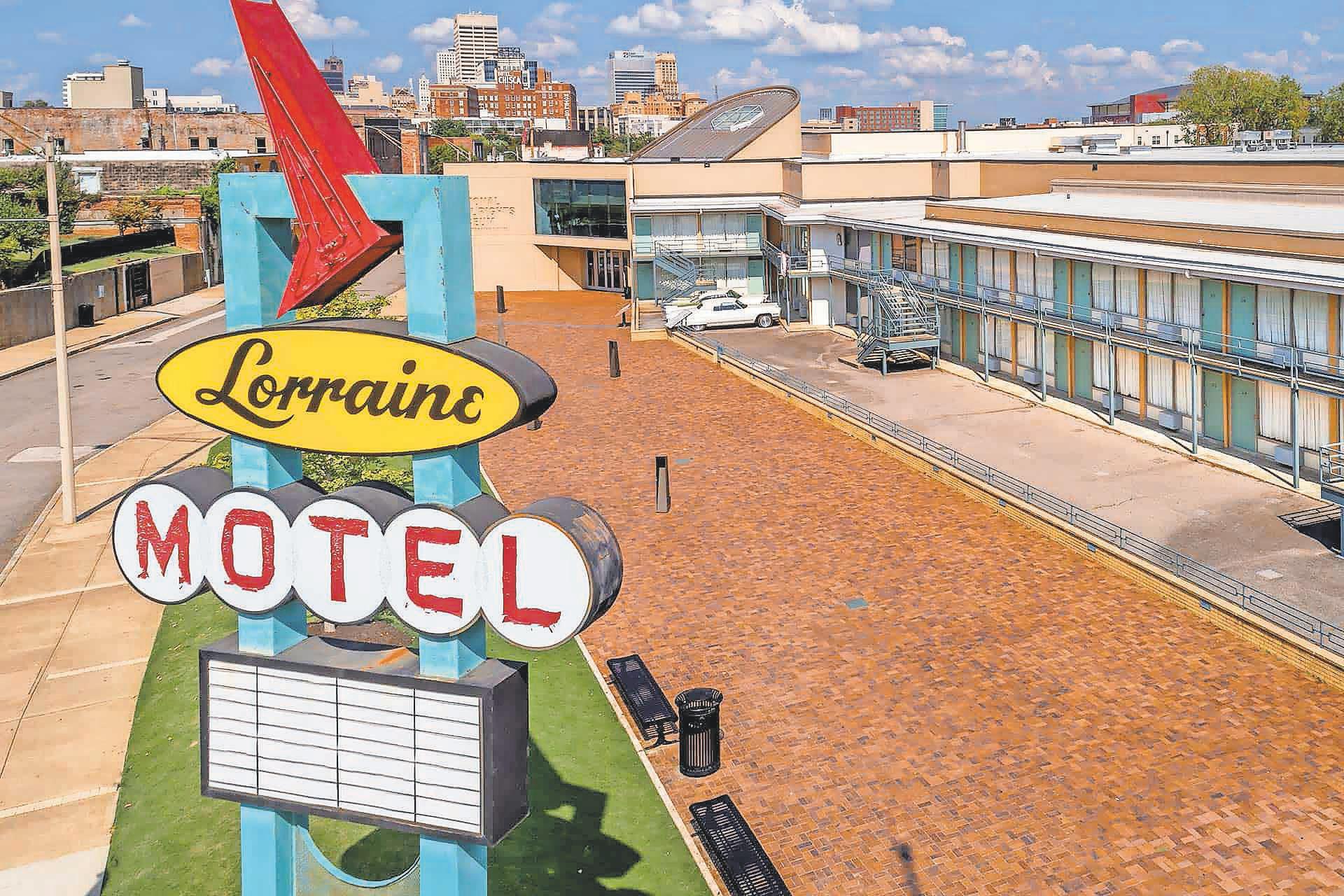
culture. The museum opened its doors on Sept. 24, 2016, with more than 36,000 artifacts and a range of exhibits on African-American contributions to athletics, arts, the military and more. The NMAAHC is also the 19th museum of the Smithsonian Institution.
“Museums play an especially important role in preserving and protecting these stories and images from erasure or co-optation,” said Robinson.
In Memphis, Tenn., the National Civil Rights Museum is revered as one of the nation’s top heritage and cultural museums. It aims to tell the
story of the American Civil Rights Movement, the lessons learned from it and how that era continues to shape equality and freedom in the U.S. and internationally.
The National Civil Rights Museum, established in 1991, is located at the former Lorraine Motel, where Dr. Martin Luther King Jr., a key figure of the civil rights movement, was assassinated on April 4, 1968. The museum features a range of lively speakers, interactive exhibits and special events such as the Ruby Bridges Reading Festival and free admission days.
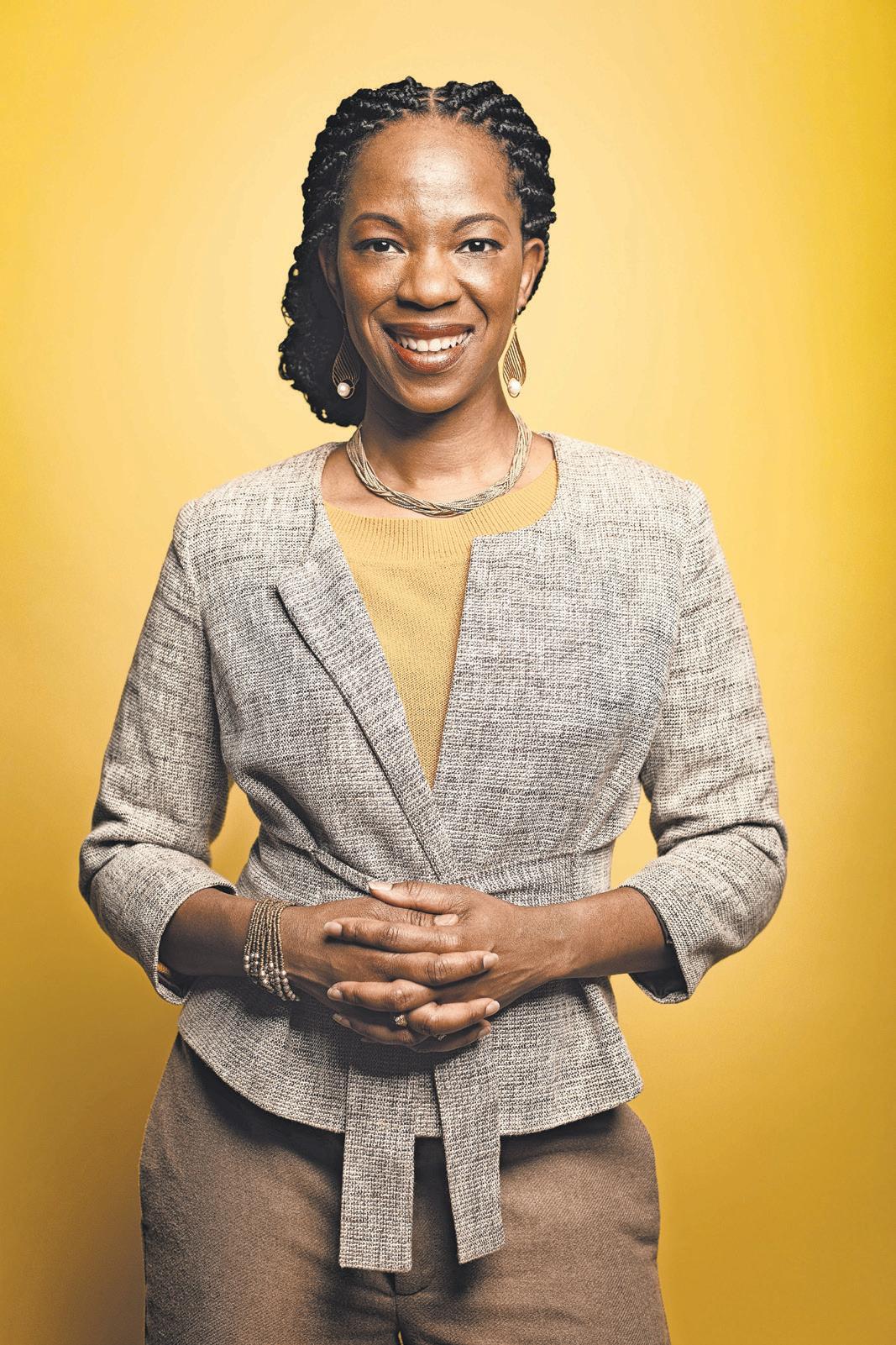
“Education is the key to teaching empathy, compassion and changing the world for the better,” said Dr. Samora Otieno, chief program officer for CorpsAfrica. “Museums have always played a key role in that regard and Black museums have never been more important than they are now. Both in Africa itself–where the work of CorpsAfrica takes place–and externally, in the U.S. and abroad.”
CorpsAfrica is a nonprofit organization that trains and deploys young college educated Africans to facilitate community-led development
projects in their countries.
Otieno pressed that Black museums are crucial to teaching history effectively.
“We all must know how we got to the ‘now’ and museums help us navigate and understand those journeys,” said Otieno. “Museums also act as important archives–lest we forget–and help to teach the next generation about the past, no matter how tough that might be. That helps us to

By Tashi McQueen
Staff Writer
AFRO
tmcqueen@afro.com
Black culture is abundant with talent, but many talents would go unnoticed without a space that fosters creativity. That is where African-American theatre companies come in. Across the country, Black companies ensure that Black artists have a space where they can hone their talents and collaborate with others.
According to Howard University’s Chadwick A. Boseman College of Fine Arts, Black people have been a fundamental part of theatre since it began in 2000 B.C. Today, African-American theatre companies throughout the U.S. continue to do the work including Penumbra Theatre, in Saint Paul, Minn., and the Tacoma Urban Performing Arts Center (T.U.P.A.C.).
Penumbra Theatre
Penumbra Theatre was founded in 1976 by award winning director Lou Bellamy. It has since become a nationally recognized entity based in Saint Paul, Minn., having produced around 200 plays and cultivated generations of artists of color.
Penumbra Theatre also stands as the state’s only Black professional theatre company. The theatre company is now led by his daughter, Sarah Bellamy, current president of Penumbra.
“We were founded out of the Black Arts Movement,” she said. “When I think about what that means for us… the formula I think about is art plus ethics equals aesthetic. We’re not making art just for art’s sake. We’re using it to comment on society. To move and provoke and hopefully incite social action.”
Bellamy said Penumbra’s art has always been intertwined with social justice, making it easy to speak out
on today’s inequities–unlike some of her colleagues in theatre who feel like they must remain silent.
“As a Black woman and as a leader of a Black theatre company, it’s important to speak up and speak out when it’s vital that we do so,” said Bellamy.
“[Despite] all of the threats to federal funding…we can’t change our mission. This is who we are. We’re just going to be bolder and more clear about it, because that’s what’s needed right now,” said Bellamy, referring to equity, diversity and inclusion funding cuts and rollbacks.
Moving forward she is looking to make Penumbra a performing arts campus and center for racial healing that nurtures Black artists, advances equity and facilitates wellness for individuals and community.
“I think about it as theatre plus,” said Bellamy. “Art changes the atmosphere, and
honor and remember history.” Robinson suggests that youth want to engage with their history in person.
“Because their world is so full of digital content, younger people are especially eager to experience these lessons firsthand,” said Robinson. “They want to gain knowledge, learn about different parts of history, and have the chance to see and be in the places where their ancestors walked.”

if we can carry that out a little further into our lives, maybe we’re living in a braver way. Practically, what that means is we’re going to continue to produce plays, but we will also have wellness programs that have both individual and collective care practices.”
She said the racial healing programs will focus on helping people attune to their bodies and training people on how to be good allies toward
one another.
“We’re not just thinking about that in terms of what White folks need to learn in interacting with people of color, but also as Black folks, how can we show up and be allies to immigrant communities or to religious minority communities,” said Bellamy.
Amid the current era of political polarization in the U.S., Bellamy emphasized the importance of
African-Americans investing in Black-owned businesses.
“I hope that as we continue to see more Black artists working in lots of different spaces, that we never forget that our institutions really matter,” said Bellamy. “Artists need to invest, philanthropies need to invest, audiences need to invest so that we can keep them thriving.”


By Andrea Stevens AFRO Staff Writer astevens@afro.com
The newly opened Pikes Studio Cinema is drawing crowds and excitement with its blend of modern amenities, community focus and cinematic charm.
The theater recently opened in Woodholme Shopping Center, making the return of big-screen entertainment to the area. Located just off Reisterstown Road, the space offers a fresh take on moviegoing with state-ofthe-art projection and sound systems, luxury seating and a menu that includes gourmet snacks and locally sourced refreshments.
“Pikesville is a very
integrated community. This is familiar ground for me. I live a mile and a half from here, and I actually walk to the theater,” said Michael Eugene Johnson, the theater owner. “The community has been welcoming and supportive, and we plan to be here a little longer.”
The theater features two cinemas with 245-seat auditoriums, leather reclining chairs, big screens and digital surround sound. They also allow independent vendors to set up in the lobby to sell their products as a sign of support and opportunity to other small business owners.
The Pikes Theater is not Johnson’s first venture into the theater industry. He has
owned several in the past.
“I owned three theaters in Baltimore—on Taylor Avenue, 25th Street and
initially said no, but eventually decided to come back and give it a try.”
To keep things interesting,
“Pikesville is a very integrated community… the community has been welcoming and supportive, and we plan to be here a little longer.”
North Avenue—about 25 years ago. I left the business in 2004, went into city government and corporate America,” he said. “When this opportunity came up, I
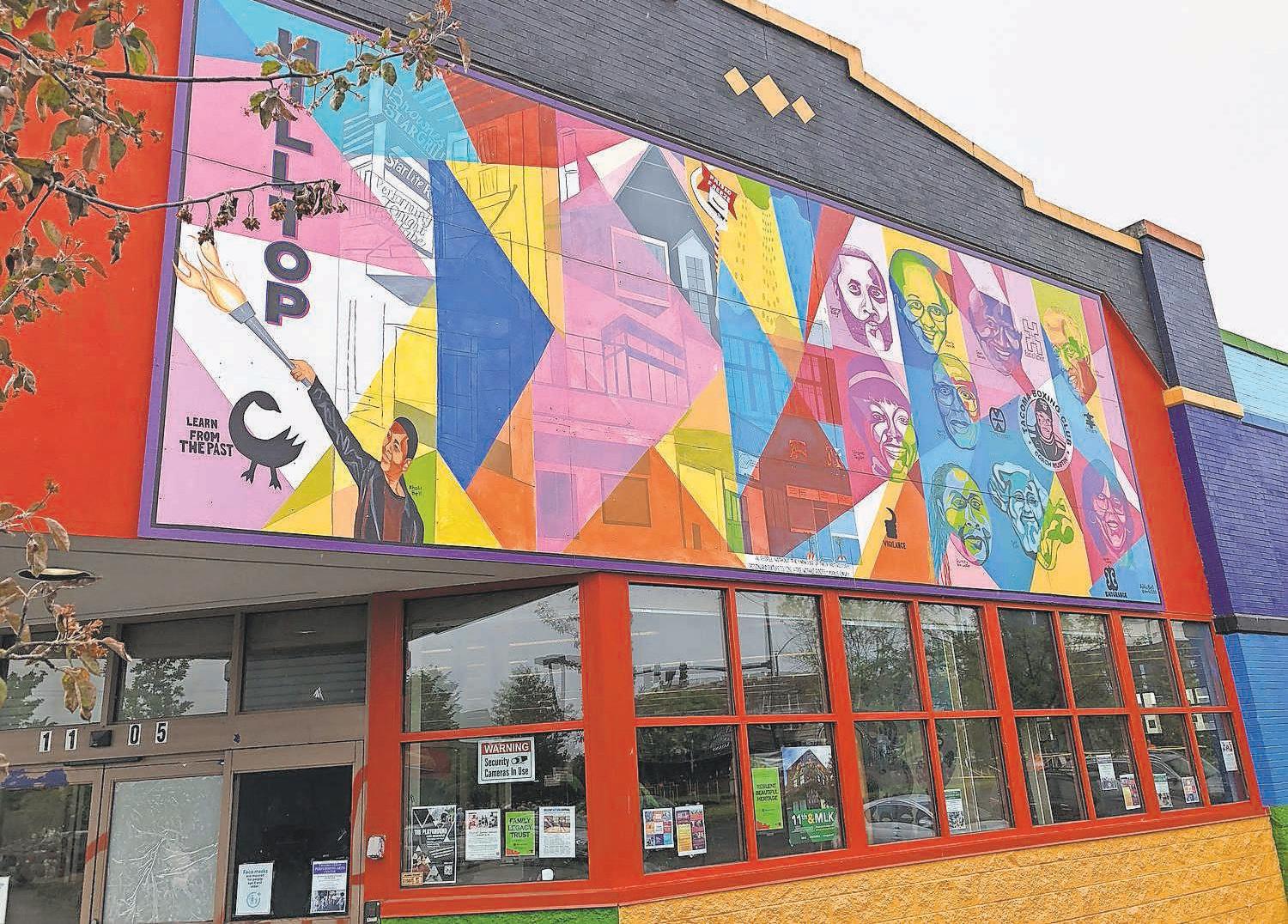
they focus on themed weeks to draw in their patrons. Moviegoers can submit requests for what they would like to see through the theater’s website.
Tacoma Urban Performing Arts Center (T.U.P.A.C.)
In Tacoma, Wash., Klair Ethridge, co-founder and executive director of Tacoma Urban Performing Arts Center (T.U.P.A.C.), leads an African-American theatre company that aims to empower Black and (Black, Indigenous, and People of Color) BIPOC youth of the historic Hilltop Community.
“We concentrate on teaching marginalized and BIPOC children classical arts,” said Klair Ethridge, co-founder and executive director of Tacoma Urban Performing Arts Center (T.U.P.A.C.). “Studies have shown that children who have classical arts education excel academically. There’s no
“For Juneteenth and Black Music Month, we’re screening films like ‘Purple Rain,’ ‘Porgy and Bess,’ and ‘Amazing Grace’,” said Johnson. “By doing theme-driven weeks, we’re able to change our movies and give people a headsup on what’s coming. This approach helps us offer variety and engage different audiences.”
To further offer community engagement and unity, Johnson partners with surrounding restaurants and allows customers that dine with them to bring their food into the theater.
“We have restaurant partnerships. Customers can bring in food from approved places, and we get a small
outlet for children to get high quality arts education here in Tacoma run by another BIPOC person.”
Ethridge said college recruiters look for children that study ballet because they know that they have a high tolerance for concentration on something that may be slow on seeing results. It helps build dedication.
Her company provides culturally relevant pre-professional dance training, hosts various community events and performing arts classes. They also provide opportunities for students to be mentored by national and international artists fostering whole person development and giving back to the community.
“Working with music, movement...it eases the soul. It elevates the soul,” she said. “That’s why it is important for a person to have a chance to really express themselves in a non-judgemental way.”
revenue share,” he said. “We also offer rentals for children’s birthday parties, where guests can pick their own movie. It’s become one of our most successful services.”
To expand on these efforts, the theater also provides weekly free screenings and is developing new cultural programs aimed at making film more accessible and engaging for the local community.
“Every Wednesday we show a free movie,” said Johnson. “We get a large number of senior citizens and people from the neighborhood. It’s an escape for them. We’re also working on launching our own film festival in September.”
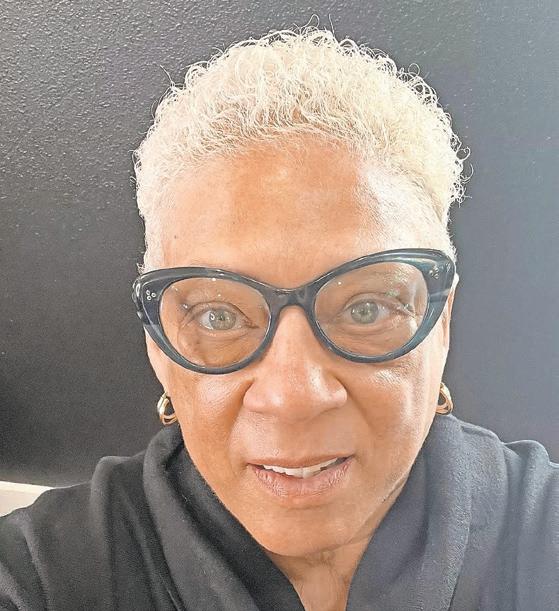

Founded in 1953, Baltimore’s Arena Players is the oldest continuously-operating Black community theater in the country. It was established at a time when African Americans were often unable to attend local White-owned theaters— let alone act in or direct productions.
D.C. native Donald Owens has been the artistic director for Arena Players for nearly two decades. He first discovered the theater in the 1970s when a college instructor introduced him to Sam Wilson, the founder of Arena Players. Wilson asked Owens to audition for his production of “Dark of the Moon,” and Owens landed the lead role. He’s been involved with the theater ever since.
The AFRO recently connected with Owens to discuss the legacy of Arena Players, the upcoming season, ongoing renovations at the theater and his vision for the future.
AFRO: What role has Arena Players historically played in creating opportunities for Black artists on stage and behind the scenes?
Donald Owens: When Arena Players came around in 1953, you have to realize that there weren’t many theaters doing African-American playwrights, including people like James Baldwin. Arena Players also gave an advantage and
opportunity to many actors, writers and directors who could not perform in other theaters unless they were playing servants. The people who founded Arena Players were artistic. They believed in the arts, and they believed that we should be exposed to our many creative contributions.
We just finished our 71st season uninterrupted. We do Shakespeare and other playwrights who are not African American, but we mainly highlight African-American playwrights. We’ve done August Wilson, Lynne Nottage, Alice Childress and even Julian Mayfield. We also have one of the biggest youth theaters, and it’s almost in its 50th year. They learn discipline and how to think through everything. People have come out of it and gone into major opera companies and major theaters on Broadway, including Damon Evans and Tracie Thoms.
AFRO: Arena Players is undergoing a significant revamp— can you discuss the renovations and how it may impact the season?
DO: The theater’s renovation is massive, which means that we will be performing at other sites for almost a whole season. We will have a brand new theater on the first floor with new floors, a new stage, new sound system and new lighting. Everything will be modernized. It’s a large undertaking but long overdue. On the second floor, we have
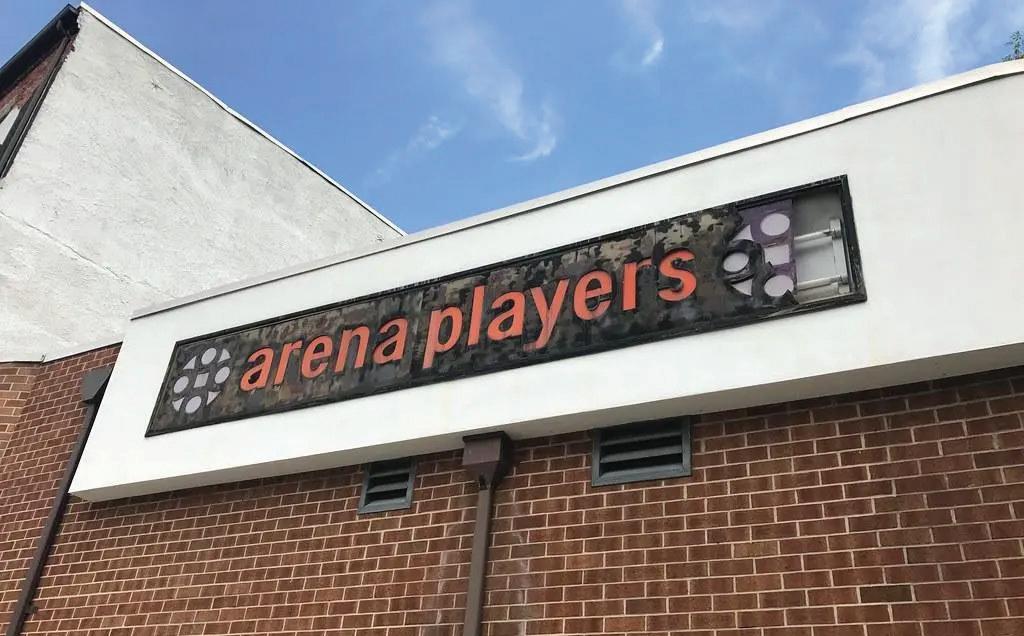
rehearsal halls, classrooms and dance studios, and they will all be updated.
Because we are in the midst of renovations, we will hopefully be starting our 72 season near the end of September. We’re looking at doing “Gos pel with Audacity The Reviv al.” It’s a three-part piece, and we’ve already done the first part. We’re also looking to do one of Robert Russell’s plays. He has passed, but he was an Arena Player for ages, and he’s a fantastic playwright. Later in the season, I want to do “The Trip to Bountiful” and “The Gospel at Colonus.” Everything this year will have a tinge of gospel and faith in it.
AFRO: What do you wish the city of Baltimore or broader arts community understood about the support Arena Players needs?
DO: I’ll have a lot of people come in and say, “You need to have more of this,” or, “You need to have more of that.” But, when I ask, “Can you please help us get that?” we never hear

from them again. Our prices are like $35, and people will complain, but they will go to the Hippodrome and pay $100 to see something. We are a community theater. The theater is part yours, but you
them. People come and see our plays, and they love them, but they have no idea how much they cost. Say we did “Sophisticated Ladies.” It costs thousands just to get the rights. Then, you have to pay your
the generation that’s coming through now. Once they try their wings, you still want to have a place where they can keep doing that.
Nowadays, you can perform at any theater around




By Yolanda Young and Thomas Bowen
Black Diary 1887, the revolutionary, GPS-enabled mobile app reimagining cultural tourism through a Black lens, is officially launching its Washington, D.C. edition.
Originally launched in Paris, with nearly 1,000 entries featuring people, places and events, Black Diary 1887 is now available in 30 U.S. cities, with the D.C. edition offering users immersive self-guided tours through neighborhoods like Shaw, Columbia Heights, Bloomingdale and Anacostia. The app highlights Go-Go music sites, African embassies, Black-owned businesses, historic landmarks and spaces of cultural resistance and celebration— rooted in the stories of the African Diaspora.
“Too often, Black cultural contributions are overlooked or fragmented. Black Diary 1887 brings those narratives together into one rich, accessible platform,” says founder Yolanda Young, a D.C. -based journalist, lawyer and activist.
Black Diary 1887 is completely free to download and use, and the company hopes
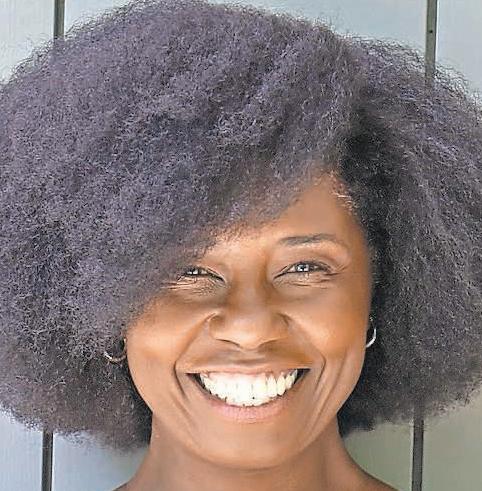
advisor in President Biden’s White House and in top roles under D.C. Mayor Muriel Bowser. His involvement underscores the project’s commitment to cultural depth, community impact and historical truth.
Black life. There are special walking routes that pay homage to:
• The Black Press — once the sole recorder of Black life, thought and resistance.
• The Black Church — the spiritual and social epicenter
“Too often, Black cultural contributions are overlooked or fragmented. Black Diary 1887 brings those narratives together into one rich, accessible platform.”
to sustain this accessibility through a combination of sponsorships and a “pay what you can” model—ensuring the app remains open and inclusive for all users.
The origin story: From Paris to D.C.
In 2019, Young traveled to Paris and joined a “Black Paris” walking tour. Though inspired by the content, she found the format costly, inflexible and too limited for the rich history she knew was out there. As Toni Morrison famously said, “If there’s a book you want to read, but it hasn’t been written yet, then you must write it.”
Over the course of four years, Yolanda Young meticulously gathered research and spent another six months collaborating with developers to transform what began as an audio picture book into a fully interactive mobile app. During her research, she uncovered that Frederick Douglass had kept a travel diary while in Paris in 1887—a discovery that inspired the app’s name, Black Diary 1887. When launched on Kickstarter, the project quickly resonated with supporters, reaching its $10,000 funding goal in just 10 days—an achievement that outpaces 65 percent of all campaigns and signals a powerful public appetite for inclusive, tech-forward explorations of culture and history.
Black Diary 1887 is proud to announce Thomas Bowen as a Founding Partner. A respected leader in faith and public engagement and a seasoned cultural strategist, Bowen served as a senior
From the Parisian café Les Deux Magots, where a broke but brilliant James Baldwin once debated Richard Wright, to D.C.’s U Street Corridor pulsing with Go-Go rhythms, Black Diary 1887 connects the global Black experience across time and space.
Why it matters: The heartbeat of the culture
The app celebrates not just major events and icons, but also the everyday pulse of
around which communities revolved and evolved.
• Everyday Icons — entrepreneurs, educators, musicians and local legends who shaped D.C.’s cultural identity.
Black Diary 1887 also features live “Around Me” GPS-maps with color-coded points of interest (e.g., purple for restaurants, gold for nightspots), and soon, will host in-person pop-up events like jazz concerts and literary salons.
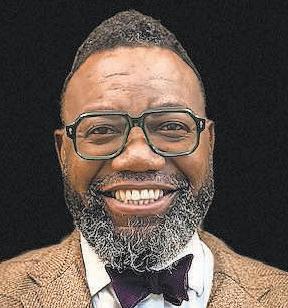


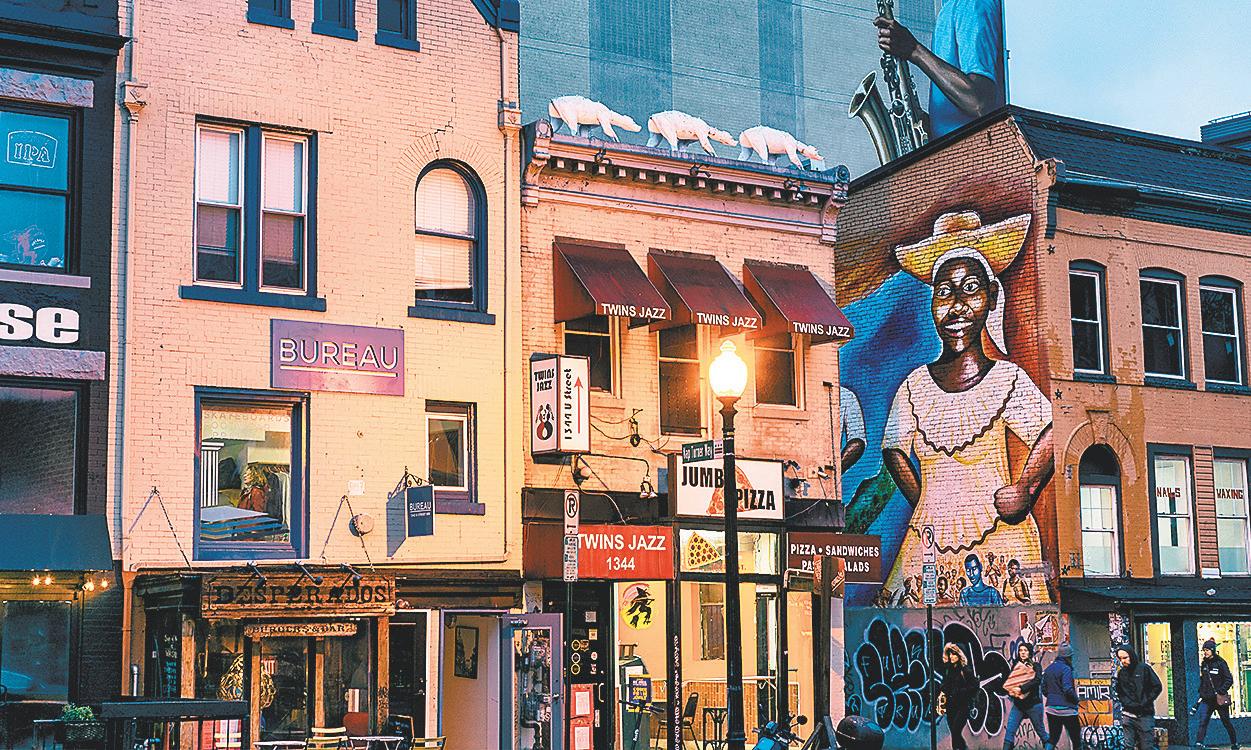

By Deborah Bailey AFRO Contributing Editor
The Harriet Tubman Underground Railroad National Historic Park is the “must go” trip to add to your summer travel agenda.
The Tubman site originally opened in March 2017, in Church Creek, Md. through a partnership between the State of Maryland and the U.S. National Park Service (NPS)
Harriet Tubman site.
This historic state-federal partnership is one of the very reasons to ensure the Harriet Tubman site is on your list this summer. Maryland State Park Rangers are working to keep the national historic site running. State staff members are on site to welcome visitors every day in the absence of NPS staff who are not present at the Tubman site this summer, or at most of the NPS’ 443 national parks, monuments and historic sites.
Tuesdays through Sundays the small State Park Ranger staff at the Harriet Tubman site in Church Creek, Md. will be busy greeting visitors who trickle in from across the region, the country and world. The space is open from 10 a.m. to 4 p.m. EST.
Visitors from all 50 states and 60 countries have made the pilgrimage to the naturally beautiful rural site to pay

homage to Tubman’s legacy.
The journey to the Harriet Tubman Center feels like stepping back in time. Located in Dorchester County, near Tubman’s birthplace in Church Creek, the center is about 50 miles off Maryland Route 50, the main highway linking Washington D.C. and Ocean City. Its remote
location was purposely chosen by the designers, according to Maryland State Park Ranger, Joanna Trojanowski.
The Tubman Center has been quite busy in recent years hosting national events in honor of the diminutive 4’1’’ woman born as Araminta Ross, Trojanowski said.
“There’s been a lot going on here about Harriet Tubman. She is on a new stamp that came out last year, she had a naval ship named after her announced in 2023, she has commemorative coins (issued in January 2024).
A lot of times we are lucky enough to be the host of all these events,” she said.
“The U.S. Navy showed up here, the Secretary came and made the announcement for the ship, the U.S. Postal Service did the first day of sales for the Tubman coins here, and even this past Veteran’s Day, the Maryland Army National Guard and the U.S. Air Force came out and posthumously commissioned General Tubman as a Brigadier General. We get to be a part of all these things,” she added.
The National Tubman site continues to be involved with the local community nearby as well. The National Tubman site collaborates with the city of Cambridge, Maryland who also hosts a Harriet Tubman Museum that was temporarily closed in May due to water damage.
University of Maryland Eastern Shore provides Tubman themed artwork.
The exhibit is contained in three buildings, guiding the visitor through Tubman’s story with artwork, media, and exhibits. Visitors can track Tubman’s Underground Railroad pathway to Pennsylvania and Canada during the multiple trips she made to rescue family members and friends from enslavement to freedom. Although Tubman could not read or write, she prepared detailed itineraries for other individuals and
families to secure their path to freedom as displayed in the multi-media exhibits in the museum.
Among the most stunning features of the national historic park are the life-size bronze statues of Tubman throughout the site. The Tubman site also features special music, art, and craft demonstrations throughout the year. For children, the Maryland Park Rangers operate a badging program where children and teens can earn badges and other items for learning about Tubman. Visitors can also partake in an annual Harriet Tubman Day in early March to celebrate the anniversary of Tubman’s death, March 10, 1913. Even on a quiet weekday, visitors throughout the region and nation make their way to Church Creek, like Sheronne Crombie Smiley, a teacher trainer from Philadelphia who came with half a dozen family and friends from New York and Atlanta. “We came together as a sister circle so we could do this family tour together,” Crombie Smiley said.
“I have learned so much. As an educator, I thought I knew it all,” stated Crombie Smiley. “But you’re never too old or too young to learn our history. This has been a fabulous experience.”
By Megan Sayles AFRO Staff Writer msayles@afro.com
The National Great Blacks in Wax Museum will hold its annual “Voices of History” Street Fair on June 28, celebrating Black history, community resilience and the collective healing that emerges from arts and culture.
The festival will take place on the block outside of the East Baltimore museum on East North Avenue. It will feature musical performances, children’s activities, local arts and food vendors and health and wellness resource booths.
“It’s a celebration of the museum and history that it has generated and preserved. It’s a celebration of the Oliver community, where the museum is housed. And, it’s a celebration of East Baltimore— where I’m from,” said David Fakunle, director of the Transforming Equity through Arts, Culture and Health (TEACH) department at the museum. “It’s part of a greater effort to show that the museum is a lot more than just wax figures. It’s a repository of not just history, but arts and culture. Part of culture includes celebration and joy.”
The “Voices of History” Street Fair was first held in 2015. It was originally created to support the local literacy program, but it’s since evolved to coincide with Juneteenth and the anniversary of the museum’s opening.
The festival is a part of the
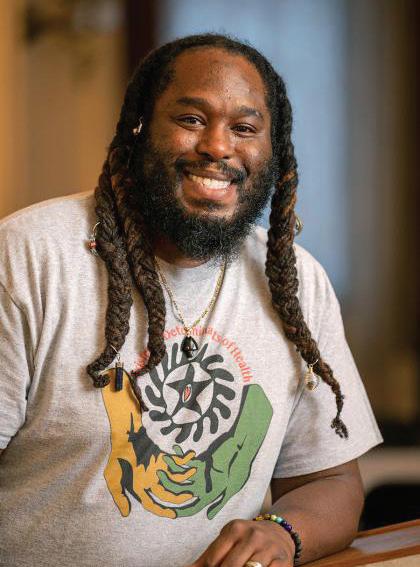
“It’s part of a greater effort to show that the museum is a lot more than just wax figures. It’s a repository of not just history, but arts and culture.”
Khaleyi African Dance and Cultural Institute and Harford Heights Elementary School.
“We expect to have more children on stage than anybody else,” said Deborah Fakunle, a supporter of the museum and sponsor for the street fair. “Our children deserve an opportunity for us to applaud them. Uplifting the children is our goal.”
The National Great Blacks in Wax Museum has been a pillar in the Oliver community since 1988 when Elmer and Joanne Martin opened the 10,000-square-foot facility on East North Avenue.
“We’re a museum that has a slave ship in one basement and a lynching exhibit in another. We’re not trying to pretty up lynching, and we’re not saying the slave ship experience was a Tom Joyner
cruise,” said Martin. “We tell it like it is.”
In recent years, the National Great Blacks in Wax Museum has collected several investments, including a $2-million congressional grant in 2023, as it prepares for a major redevelopment. The museum will expand from 1601 E. North Ave. to 1611 E. North Ave.
It’s the youth that has kept Martin focused on boosting the presence of the museum.
“Every child in this nation needs to know this history,” said Martin. “It’s our history— whatever your race, color, creed or any of that.”
museum’s Existential Determinants of Health Initiative, which leverages artistic and cultural practices to help the Baltimore community face and overcome trauma.
“Having a space for celebration and joy is good for your mental health and social-emotional health. If we look at it from an existential standpoint, joy is usually
a result of being acknowledged, appreciated, respected, understood and loved,” said Fakunle. “That’s what we all want.”
This year, the festival will shine a special spotlight on Baltimore youth. There will be youth vendors selling their products and wares and performances by young people, including those from the Keur
The museum houses nearly 150 life-size wax figures of notable African-Americans, like Frederick Douglass, Rosa Parks, Barack Obama and Henrietta Lacks. It also features a lynching exhibit and a slave ship replica.
Joanne Martin explained that central to the museum’s mission is telling the uncompromising truth about Black history. She and her late husband refused to sanitize or soften the realities of slavery, racism and resistance.


By Laura Onyeneho
Larry Callies didn’t plan to open a museum. But in 2017, he says God gave him a vision to create a space to preserve and showcase the legacy of Black cowboys.
He didn’t know why at the time. What he did know was that Black cowboy history was rarely, if ever, taught in his 1960s segregated school, where he lived in Hungerford, Texas.
“I’m a Christian first and a cowboy immediately after,” Callies says. “And I know when God closes one door, He’ll open a better one. He opened up this museum.”
His Black Cowboy Museum in Rosenberg, Texas, is now one of the only institutions in the country solely dedicated to this forgotten history. Through memorabilia, photographs and personal storytelling, Callies brings to life the legacy of the Black cowboy, a legacy often overshadowed, whitewashed or erased altogether.
Born and raised in El Campo, Texas, Callies rode horseback and roped cattle alongside his father, uncle and cousins. His father supplied stock for local rodeos and passed down his cowboy skills and values. But when schools integrated, Callies’ cowboy boots made him a target.
“When people think people oughta be a certain way, they make fun of them,” he says.
Still, he stayed true to who he was. As a young man, he entered rodeo competitions and, in 1971, became the second Black cowboy to reach the state finals in bareback riding, just a few years after his cousin, Tex Williams, made history as the first Black high school rodeo champion in Texas in 1967.
While Callies competed in rodeos, he dreamed of becoming a country singer like his idol Charley Pride. He eventually opened for music legends like Selena and performed for dignitaries including President George H.W. Bush and Governor Ann Richards. But just as he was preparing to record an album, a neurological condition, vocal dysphonia, silenced his voice.


Love went on to author the book, The Life and Adventures of Nat Love, in 1907.
“My voice gave out right when it was my time,” Callies says. “But when I lost my voice, God gave me another.”
A chance encounter with history
on horseback. That moment shifted everything.
“That was the first proof I saw that cowboys like me weren’t just pretending,” he says. “We were the original.”
“I knew the term ‘boy’ was used derogatorily for Black men. But I didn’t know that ‘cowboy’ came from that same place. It was originally a term used to dehumanize enslaved people who herded cattle.”
Callies was a postal worker who retired in 2011. He decided to put on his gear once more to work as a historical reenactor at George Ranch Historical Park on the outskirts of Houston. As he cleared the barn, he stumbled upon a photo from the 1880s showing seven Black cowboys
That image and his faith and deep pride in his heritage fueled the birth of the Black Cowboy Museum.
Today, Callies is not just the museum’s founder; he’s also its lead guide and historian.
Thousands of visitors from across the nation, including busloads each week, come to hear his voice tell the stories

that history books leave out. There was a point in time when pop culture Whitewashed the stories of Black cowboys.
When you hear “cowboy,” you might associate it with Hollywood icons like John Wayne or Clint Eastwood, but historians suggest that one in four cowboys were Black.
The Lone Ranger television series (1949) was inspired by African-American escaped slave Bass Reeves.
Many have invested interests in these stories, notably with features in the New York Times and season one of the Netflix documentary High on the Hog: How African American Cuisine Transformed America, episode titled Freedom.
With the return of cowboy culture in music, film and fashion, Callies’ work is vital to the culture.
The “Yeehaw Agenda” is a movement coined by a young Black woman from Dallas, Bri Malandro, highlighting Black cowboys and cowgirls in popular culture. This is seen in the success of rapper Lil Nas X’s Uptown Road and Beyoncé’s Cowboy Carter album.
Aaron Murphy has served as the museum’s assistant, handling daily scheduling, coordinating tours and events and helping manage the back-office operations while serving as a guide himself.
Murphy’s journey into the world of Black cowboy history is one of revelation.
“When I first came to the museum, I thought I knew a little bit,” he said. “But after sitting in on Larry’s tours and taking notes for two weeks, I realized most of this history wasn’t taught anywhere.”
One point that struck him deeply was the origin of the term “cowboy.”
“I knew the term ‘boy’ was used derogatorily for Black men,” he explained. “But I didn’t know that ‘cowboy’ came from that same place. It was originally a term used to dehumanize enslaved people who herded cattle.”
Hollywood later whitewashed these stories, pushing Black cowboys out of the frame while elevating names
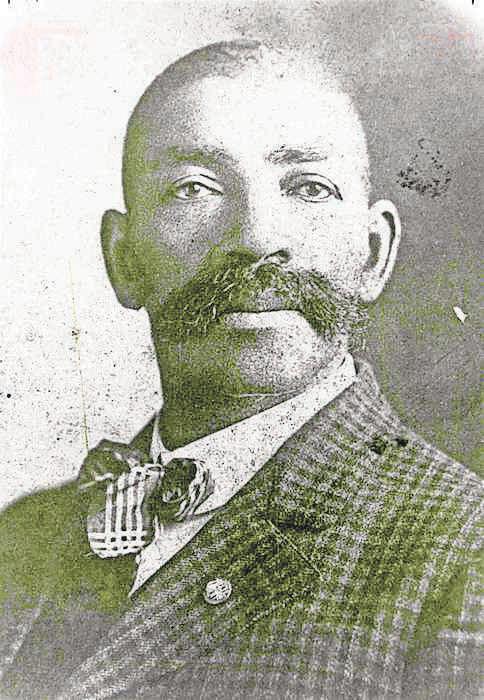
like John Wayne and Hopalong Cassidy.
Murphy did his research to verify Callies’ points and found they were historically sound.
“It’s valid history, just whitewashed or completely removed from history books,” he said.
That realization fueled his passion for the museum’s mission. Artifacts at the museum are sourced mainly from the surrounding Southeast Texas community.
“People around here hold on to things for generations,” Murphy said. “When their grandkids find these items, they often donate them to the museum.”
The museum staff is currently inventorying these items, with plans to launch an online portal so that schools and researchers can access historical documents and photographs.
“Some school districts have blocked our material,” Murphy revealed. “Evidently, you’re no longer allowed to
teach this kind of history. But we’re going to keep preserving it and sharing it, because it matters.”
The nonprofit museum, which generated $200,000 in revenue in 2022, is set to expand to a new 4,000-squarefoot site in historic Bates M. Allen Park in Kendleton. Bates M. Allen Park houses two historical freedmen’s burial sites, Newman Chapel Cemetery and Oak Hill Cemetery.
One is the final resting place of former State Rep. Benjamin Franklin Williams, who became the first Black legislator in Texas and one of only 10 Black constitutional delegates during Reconstruction.
The project was to be completed in 2023, but changes in funding have delayed it.
“We’re hoping to get a grant somewhere else,” said. “These are the times we are in, but the show must go on.” This article was originally published by the Defender Network.

By Donnell Suggs
The first face you see when you turn into the driveway of the Penn Center might be one of the most familiar faces in the history of the United States. A sign with the word “Welcome” rests above a large photo of Atlanta native and late civil rights activist Dr. Martin Luther King, Jr.
The connection between Dr. King and the Penn Center is deep and full of history. The institution was called the Penn School when it was built in 1862 as the first school for formerly enslaved West Africans.
King and many of his fellow civil rights-era stalwarts visited the Penn Center and stayed on campus during those visits. During the height of the Civil Rights Movement, the Penn Center was a place King and many others could strategize but also get away from the Birminghams, Chicagos and Atlantas of the world. The retreat house, situated through the woods and overlooking the water, was built specifically for King. The Ebenezer Baptist Church Pastor, Morehouse College graduate and Nobel Peace Prize winner never got a chance to stay there, as he was murdered in Memphis a few months before the home was completed.
King and the Southern Christian Leadership Conference held several retreats at the Penn Center from 19641967. A paper on those visits to St. Helena Island titled “I Will Not Be Silent, and I Will Be Heard” was written by South Carolina historian and author J. Tracy Power.
“When he would come to town, we didn’t know about it,” Erveria Faulkner, 86, said. “They didn’t want the citizens of St. Helena Island to know about it.”
Members of The Atlanta Voice team recently spent a couple of days at the Penn Center in order to better understand the center’s connectivity to Atlanta.
From learning how to farm to training students on how to build homes and schools, the Penn Center was at the center of life on St. Helena Island during a time when


educating Black people was forbidden. The institution received National Historic Site recognition in 1975. The various buildings located on campus remain in the original locations of construction.
There have been structural updates, but the bones of the institution are still the same.
Dr. Robert Adams, the Penn Center’s executive director, is a native of Bangor, Maine, who grew up a military brat and lived all over the world. Now, he lives in one of the houses on campus. He says he enjoys being one with the immense history of the Penn Center.
“I like to sit with the ancestors,” Adams said. Adams says the Penn Center’s legacy is an important piece of the story of Black

history and The Atlanta Voice and other members of the Black Press need to tell the story.
“This is a testament and a witness if you will to the importance of Black history in the evolving story of American democracy,”
Adams said. “That’s why this is so important. All the major characters came through here: Booker T. Washington, Dr. Martin Luther King, Jr., Robert Smalls, Harriet Tubman, this is an important platform for the struggle for civil rights and full citizenship.”
That list of luminaries who have visited the Penn Center also includes Dr. Benjamin E. Mays, the sixth president of Morehouse College and former mentor of Dr. King.
Adams says the story of the Penn Center has to be told in order to properly tell this country’s story.
“We have to be heard because we have to tell our own stories if our stories are going to be appreciated and understood,” said Adams.
York Glover, Beaufort County Councilman (District 3), graduated from St. Helena High School and loves his community. His work as a county council member has been focused on two things: Creating economic opportunities for the St. Helena community and keeping the golf courses off the island. The latter is an issue that has picked up steam of late.
“The voice of the community is struggling to keep the golf courses off the island,” said Glover, who is Vice Chairman of the Public Facilities Commission and has been a part of the council for nine years. “It’s a lot of work.”
Glover says that he has to constantly remind the locals that the history of St.
the Penn Center, the goal has always been to educate, train, prepare, and protect. The land is sacred to many who work there, live there and conduct business on the grounds.
Before Quet, Chieftess of the Gullah Geechee Nation, introduced herself and begins to talk about the important relationship between water and St. Helena Island, her hometown, she asked everyone to hold hands and pray.
Spirituality, no matter what the foundation of one’s faith, is very important to the people of the island.
“I’ve been everywhere around the world but there’s no place like home,” Quet said.
Reverend Johnnie Simmons has several pieces of his work on display at the Penn Center’s museum. An artist and native of St. Helena Island, Simmons served his country in the United States
Smalls told the story of looking up from a rice paddie in Vietnam one evening as the threat of death from an enemy’s bullet filled the air. Smalls recalled the moon being full and bright and he wondered if someone was back home on St. Helena Island looking at that same moon.
“That kept me alive,” Smalls said.
These days the elderly Smalls makes sure visitors to the Penn Center can visit the Mary Jenkins Praise House, one of the few places Black people on St. Helena Island could worship in peace.
“There’s a lot of history that came out of Penn Center,” Smalls said. The things that are going on in America today aren’t new to us. We feel it, but we can handle it.” Adams believes it is as much about the people of the Penn Center as it is the histor-
“The Penn Center addresses the complexities of this region and the national conversation of how we have come to this age.”
Helena Island is important to preserve.
“Reconstruction gave us hope and Jim Crow took it away,” Glover said. “If we don’t know our history we are doomed to repeat it. All money is not good money.”
The connection between the Penn Center and the City of Atlanta extends beyond Dr. King’s life and legacy.
“The Penn Center, since 1863, has served to hold the line against fear and promoted what is the best in what this republic can produce,” said Atlanta Preservation Center Executive Director David Yoakley Mitchell. “The Penn Center addresses the complexities of this region and the national conversation of how we have come to this age. The Atlanta Preservation Center has become a partner with the Penn Center and connected the unique dynamics of Dr. King, the “I Have A Dream” speech, and so much more.”
Mitchell, who is also the Penn Center Board Chair, said other than being a husband and a father, his work with the Penn Center “has become the thing that brings me a genuinely real sense of purpose.”
There are many people who have helped and continue to help make the Penn Center special.
As part of her presentation, Queen Quet holds sessions in the main room of the Frissell Community House, which is located on the campus of the Penn Center. As she prepares to address the crowd, she often sing the chorus from “Wade in the Water” or other Negro Spirituals.
Located on the campus of the Penn Center, the Frissell Community House, which was built in 1925, is one of many buildings that were built on the 50-acre property. At
Army and overseas during the Vietnam War. Simmons found painting as a therapy for the physical and mental scars of war and never looked back.
His pieces such as “Gullah Baptism,” “When Everything Fail, Pray, Then Go Fishing,” “De Gullah Farm,” and “A Man Gotta Have a House,” do well to represent the colors and vibrancy of the Gullah Geechee culture.
The art of the late Thomas “Sam” Doyle can also be seen at the Penn Center museum, where he studied at the formerly named Penn School and where Dr. Marie Gibbs is currently the caretaker of the museum.
Deacon James P. Smalls, a caretaker in his own right, also cultivates culture on the Penn Center grounds at the Mary Jenkins Praise House.
ical importance of the place. Speaking of Smalls, Adams said, “He’s not just the guardian of the praise house, he’s the guardian of the tradition.” And Smalls says he has no plans on slowing down anytime soon.
“I’m determined to keep it going,” he said.
Next year will mark the 250th anniversary of this country and the Penn Center has been around for 162 of those years. The work being done there and the history on display there is even more important today than ever, says Mitchell.
“I hope others will go to the Penn Center and experience and feel what courage really looks like,” he said. This article was originally published by The Atlanta Voice.


The Black church has always been a hub and an ark for the Black community. As in the days of Noah, the ark was the safe haven for the life of a nation, the physical structure that carried an unprecedented movement and the revitalization and restructuring of a society.
Through time, Black churches have refused to be muted as they boldly push for change and courageously call equality across the landscape of America. This includes Mother Bethel African Methodist Episcopal Church in Philadelphia, Pa. founded in 1794; The Abyssinian Baptist Church in Harlem, New York, and Ebenezer Baptist Church of Atlanta, Ga., where the King legacy resides.
On the importance of the Black church, Rev. Al Sharpton, has said “These churches aren’t just buildings — they’re monuments of faith, freedom and resilience, where Black history wasn’t just preached, it was made.”
If walls could talk, these historical landmarks would proclaim the Black church as a place of refuge– not religion. It was, and is today, a set place of freedom, worship, transformation and restoration.
Ordinary men and women with extraordinary vision and purpose have stepped into these spaces like Nehemiah to build the foundations of the Black community through spiritual awareness, economic empowerment, education and family dynamics. Congregants are known for boldly uniting in the face of racial injustice and addressing social change while developing a resilience that has charted the path of Black life in America.
Mother Bethel African Methodist Episcopal Church
Founded by formerly enslaved Richard Allen and his co-laborer, Absalom Jones, Mother Bethel African Methodist Episcopal Church is the first African Methodist Episcopal Church in the United States and is located on the oldest parcel of land “continuously” owned by Blacks. It emerged from the disruption of fellowship between Black and White churchgoers at St. George’s Methodist Episcopal Church in Philadelphia. In 1783, Rev. Allen, a traveling Methodist preacher in the northeast, was invited to share the good news at St. George’s. Allen was well received by both Black and White congregations. As his notoriety attracted more Black worshipers, the leadership of St George’s demanded segregated worship services. To that end, Allen and his co-leaders refused to succumb to the racial divide.
Mother Bethel was established in 1794 as an independent Black church, and became the foundation and model for the African Methodist Episcopal Church in 1816, the first independent Black denomination. Mother Bethel was a hub for abolitionists, education and Black empowerment and is still a force today.
Society of Black Alumni Presidential Professor and Professor of History at Johns Hopkins University in Baltimore Dr. Martha S. Jones weighed in how churches like Mother Bethel advanced different movements for equality.
“Black women’s political rights have their origin in churches like Mother Bethel,” she said. “Black women broke barriers, won the vote and insisted on equality for all–opening with church women and ending with Kamala Harris.”
Founded in 1808, Abyssinian Baptist Church in Harlem, New York, was known for powerful preaching, economic empowerment, cultural impact, resistance to racism, and political engagement.
The church was led in the 20th century by Rev. Adam Clayton Powell, Sr., a founding father of the Urban League and active member of the NAACP, and then his successor, Congressman Adam Clayton Powell, Jr., his son.
Again, Black parishioners, in protest of discrimination in a worship setting, rejected the injustice of segregated seating at the First Baptist Church of New York City. Determined to worship freely and supported by Rev. Thomas Paul, a Black minister from Boston, the 15 founding members purchased their first property and organized the first Black Baptist Church in the State of New York. They named the ministry Abyssinia, which reflected their Ethiopian and African American heritage.
They empowered the Black community materially and intellectually through
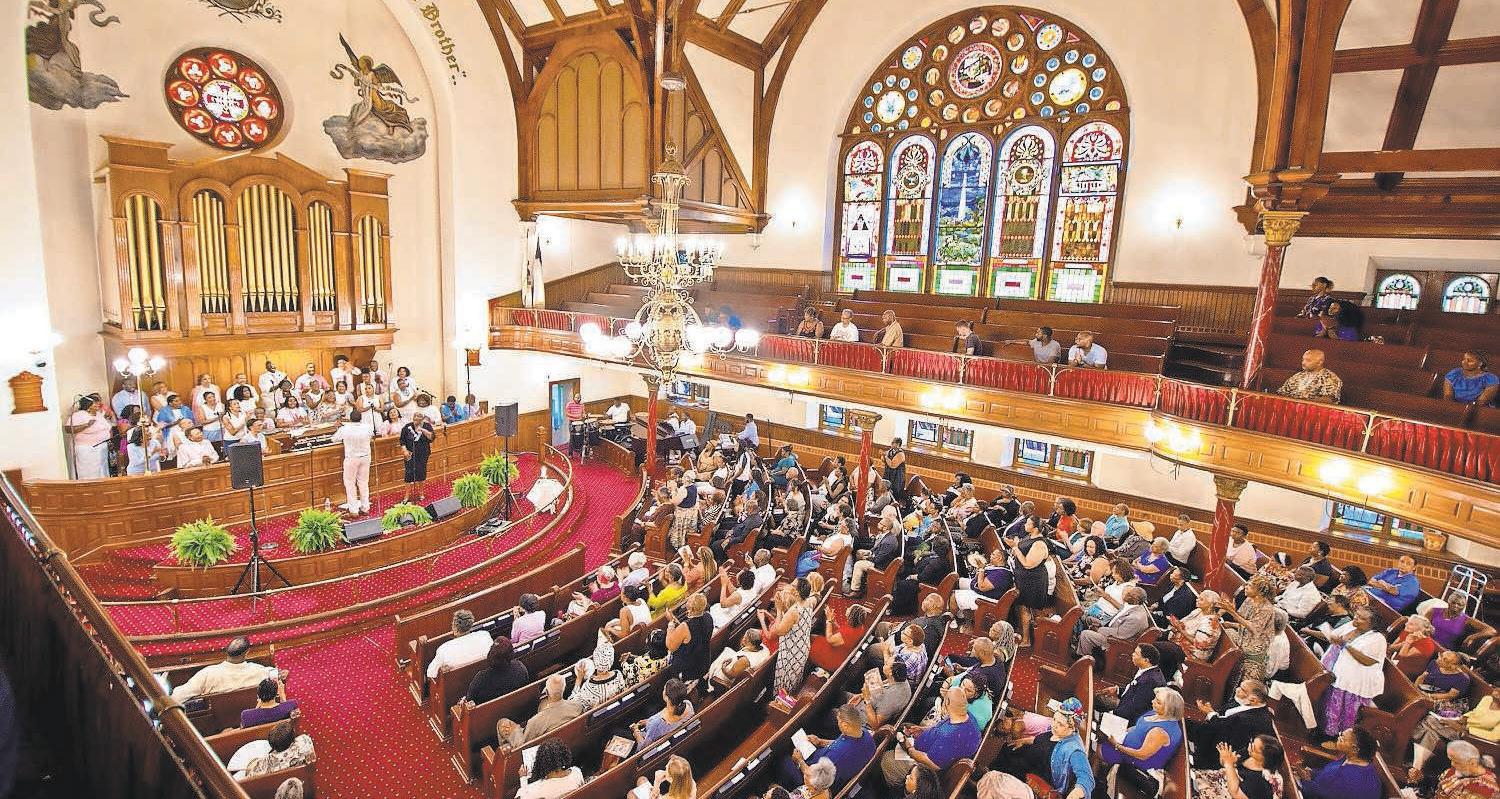

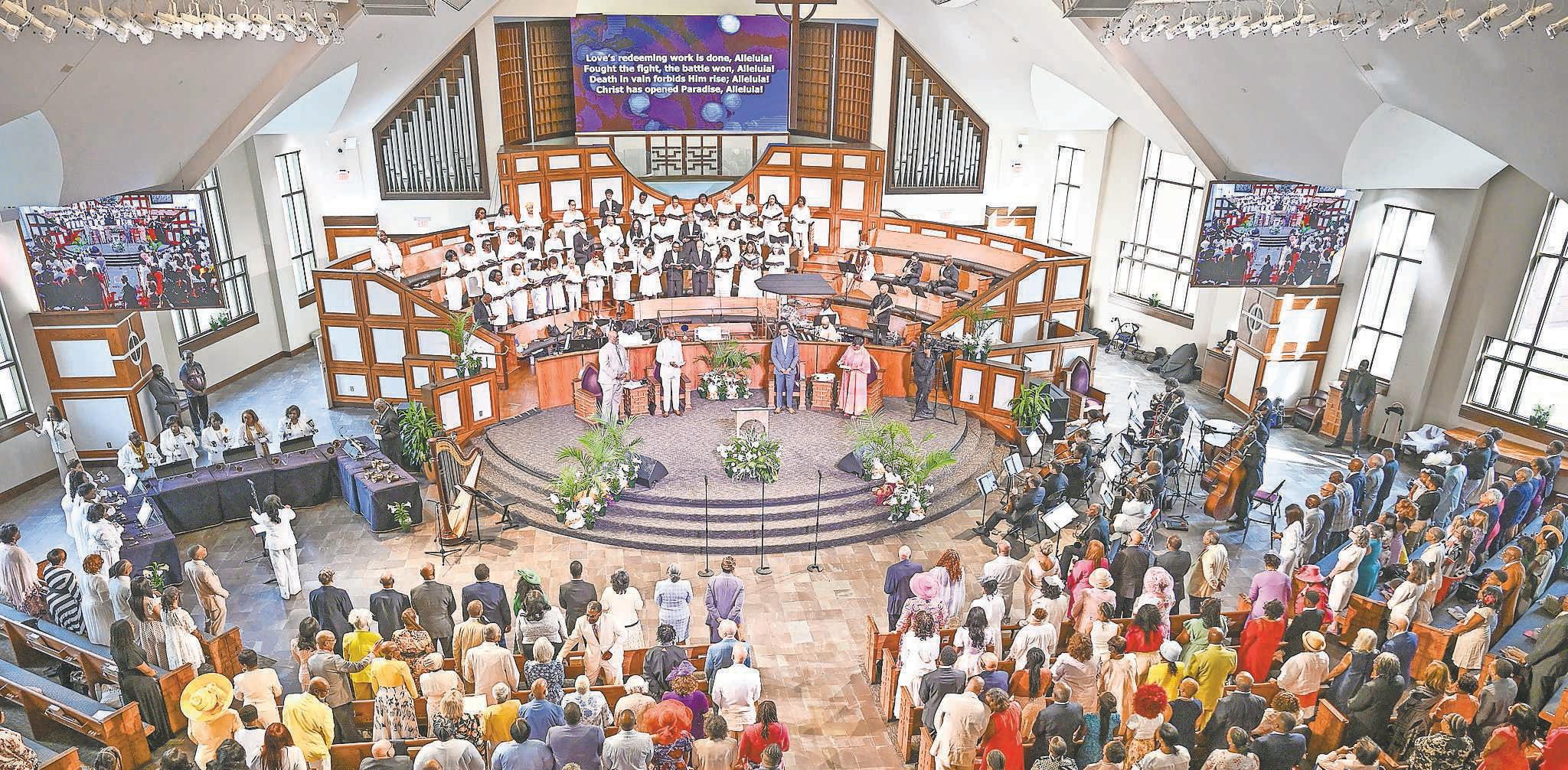
literacy, schools for Black children and leadership programs. The Powells became prominent political figures, pioneering Black political leadership in Harlem and nationally. Abyssinian is often cited in studies on the social gospel as the premier Black church of the movement.
The Abyssinian Baptist Church became an integral part of establishing Harlem as a Black mecca–a thriving community with influential figures and economic delegation. The church provided needed support through food distribution, employment services and schooling for adult learners.
Ebenezer Baptist Church
Ebenezer Baptist Church, Atlanta, Ga., humble beginnings in 1886, under the direction of
Rev. John A. Parker, broke ground for a greater mission to manifest. Parker’s pastorate only lasted for eight years without much growth.
Then, the baton was passed to Rev. Adam Daniel Williams, the maternal grandfather of Martin Luther King, Jr. who had a big vision and drive for the community he served.
Dr. Tejai Beulah Howard, an instructor at Columbus State Community College in Columbus, Ohio, discloses the whole story for Ebenezer Baptist Church.
“At Ebenezer, Rev. Adam Daniel Williams, his son-in-law, Rev. Martin Luther King, Sr., and his grandson, Rev. Martin Luther King, Jr. all advocated for the social gospel over the course of the 20th century.”
“They preached messages of social justice and connected those messages to their belief
that God called for justice and equality for African Americans,” she said.
“This message continues to be espoused by the church’s current pastor, Rev. Raphael Warnock, a United States Senator,” said Howard. “Warnock is significant, because like Rev. Adam Clayton Powell, Jr., who succeeded his father at Abyssinian in Harlem, he is also actively pastoring and serving in Congress.”
“Essentially, all three churches represent models of socially and politically engaged religious leadership, a style of leadership that is desperately needed today!”
These historic Black churches went above and beyond as centers of change. Their legacies are honored for building generations of freedom through courage and faith and their stories remind
is

COURT OF THE DISTRICT OF COLUMBIA PROBATE DIVISION 2025FEP57 DECEMBER 09, 2023 Date of Death CAROLYN CHESLEY Name of Decedent
NOTICE OF APPOINTMENT OF FOREIGN PERSONAL REPRESENTATIVE AND NOTICE TO CREDITORS
WILLIAM E. CHESLEY whose address is 5803 FEDERAL COURT UPPER MARLBORO MD 20772 was appointed representative of the estate of CAROLYN CHESLEY deceased, by the ORPHANS COURT for PRINCE GEORGE’S County, State of MARYLAND, on SEPTEMBER 26, 2024. Service of process may be made upon JOHN CHESLEY 2608 32ND ST SE, WASHINGTON, DC 20020 whose designation as District of Columbia agent has been filed with the Register of Wills, D.C. The decedent owned the following District of Columbia real property: Claims against the decedent may be presented to the undersigned and filed with the Register of Wills for the District of Columbia, Building A, 515 5th Street, N.W., 3rd Floor, Washington, D.C. 20001 within 6 months from the date of first publication of this notice.
Date of first publication: JUNE 13, 2025 Name of newspaper, and/or periodical: Daily Washington Law Reporter AFRO-American
WILLIAM E. CHESLEY Personal Reperesenative
TRUE TEST COPY REGISTER OF WILLS 06/13, 06/20, 06/27/25
SUPERIOR COURT OF THE DISTRICT OF COLUMBIA
PROBATE DIVISION ADMINISTRATION NO. 2025ADM000641
DANA A. GRIMES Name of Decedent
WILLIAM A. BLAND, ESQUIRE 80 M STREET SE #330 WASHINGTON, DC 20003 Notice of Appointment, Notice to Creditors and Notice to Unknown Heirs
KEYVONNA A’NEESHA MARSHALL, whose address is, 3104 28TH PARKWAY TEMPLE HILLS, MD 20748 was appointed Personal Representative of the estate of DANA A. GRIMES who died on DECEMBER 24, 2024 without a Will and will serve without Court supervision. All unknown heirs and heirs whose whereabouts are unknown shall enter their appearance In this proceeding. Objections to such, appointment shall be filed With the Register of Wills, D.C., Building A, 515 5th Street, N.W., 3rd Floor, Washington, D.C. 20001, on or before DECEMBER 27, 2025. Claims against the decedent shall be presented to the undersigned with a copy to the Register of Wills or filed with the Register of Wills with a copy to the undersigned, on or before DECEMBER 27, 2025 or be forever barred. Persons believed to be heirs or legatees of the decedent who do not receive a copy of this notice by mail within 25 days of its publication shall so inform the Register of Wills, including name, address and relationship. Date of first publication: JUNE 27, 2025 Name of newspaper and/or periodical: Washington Law Reporter AFRO American Newspapers
KEYVONNA A’NEESHA MARSHALL
Floor, Washington, D.C. 20001, on or before DECEMBER 20, 2025. Claims against the decedent shall be presented to the undersigned with a copy to the Register of Wills or filed with the Register of Wills with a copy to the undersigned, on or before DECEMBER 20, 2025 or be forever barred. Persons believed to be heirs or legatees of the decedent who do not receive a copy of this notice by mail within 25 days of its publication shall so inform the Register of Wills, including name, address and relationship. Date of first publication: JUNE 20, 2025 Name of newspaper and/or periodical: Washington Law Reporter AFRO American Newspapers
EMILY S. LEIVA Personal Representative TRUE TEST COPY REGISTER OF WILLS 06/20, 06/27, 07/04/25
SUPERIOR COURT OF THE DISTRICT OF COLUMBIA PROBATE DIVISION ADMINISTRATION NO. 2025ADM000610 LENWOOD DAWES KEYS Name of Decedent Notice of Appointment, Notice to Creditors and Notice to Unknown Heirs MAURICE KEYS whose address is 1304 ELSON PLACE TAKOMA PARK MD 20912 was appointed Personal Representative of the estate of LENWOOD DAWES KEYS who died on DECEMBER 28, 2024 with a Will and will serve without Court supervision. All unknown heirs and heirs whose whereabouts are unknown shall enter their appearance In this proceeding. Objections to such, appointment shall be filed With the Register of Wills, D.C., Building A, 515 5th Street, N.W., 3rd Floor, Washington, D.C. 20001, on or before DECEMBER 27, 2025. Claims against the decedent shall be presented to the undersigned with a copy to the Register of Wills or filed with the Register of Wills with a copy to the undersigned, on or before DECEMBER 27, 2025, or be forever barred. Persons believed to be heirs or legatees of the decedent who do not receive a copy of this notice by mail within 25 days of its publication shall so inform the Register of Wills, including name, address and relationship. Date of first publication: JUNE 27, 2025 Name of newspaper and/or periodical: Washington Law Reporter AFRO American Newspapers
MAURICE KEYS Personal Representative
TRUE TEST COPY REGISTER OF WILLS 06/27, 07/04, 07/11/25
SUPERIOR COURT OF THE DISTRICT OF COLUMBIA PROBATE DIVISION ADMINISTRATION NO. 2025ADM000640
RICHARD DEADWYLDER Name of Decedent
NATALIE S. WALKER, ESQ 1101 CONNECTICUT AVE., NW, SUITE 402 WASHINGTON, DC 20036 Notice of Appointment, Notice to Creditors and Notice to Unknown Heirs
its publication shall so inform the Register of Wills, including name, address and relationship. Date of first publication:
JUDY ANN DEADWYLDER, whose address is, 3017 N STREET, SE, WASHINGTON, DC 20019 was appointed Personal Representative of the estate of RICHARD DEADWYLDER who died on NOVEMBER 30, 2024 with a Will and will serve without Court supervision. All unknown heirs and heirs whose whereabouts are unknown shall enter their appearance In this proceeding. Objections to such, appointment shall be filed With the Register of Wills, D.C., Building A, 515 5th Street, N.W., 3rd Floor, Washington, D.C. 20001, on or before DECEMBER 27, 2025. Claims against the decedent shall be presented to the undersigned with a copy to the Register of Wills or filed with the Register of Wills with a copy to the undersigned, on or before DECEMBER 27, 2025 or be forever barred. Persons believed to be heirs or legatees of the decedent who do not receive a copy of this notice by mail within 25 days of its publication shall so inform the Register of Wills, including name, address and relationship.
Date of first publication: JUNE 27, 2025
Name of newspaper and/or periodical: Washington Law Reporter AFRO American Newspapers
JUDY ANN DEADWYLDER
Personal Representative
TRUE TEST COPY REGISTER OF WILLS 06/27, 07/04, 07/11/25

SUPERIOR COURT OF THE DISTRICT OF COLUMBIA PROBATE DIVISION ADMINISTRATION NO. 2025ADM000431
LUCKY TIMOTHY PIANWI Name of Decedent Notice of Appointment, Notice to Creditors and Notice to Unknown Heirs
ZORBARI VICTORIA PIANWI whose address is 5213 CLAY STREET, N.E, WASHINGTON, D.C. 20019 was appointed Personal Representative of the estate of LUCKY TIMOTHY PIANWI who died on APRIL 02, 2022 without a Will and will serve without Court supervision. All unknown heirs and heirs whose whereabouts are unknown shall enter their appearance In this proceeding. Objections to such, appointment shall be filed With the Register of Wills, D.C., Building A, 515 5th Street, N.W., 3rd Floor, Washington, D.C. 20001, on or before DECEMBER 27, 2025. Claims against the decedent shall be presented to the undersigned with a copy to the Register of Wills or filed with the Register of Wills with a copy to the undersigned, on or before DECEMBER 27, 2025, or be forever barred. Persons believed to be heirs or legatees of the decedent who do not receive a copy of this notice by mail within 25 days of its publication shall so inform the Register of Wills, including name, address and relationship. Date of first publication: JUNE 27, 2025 Name of newspaper and/or periodical: Washington Law Reporter AFRO American Newspapers
ZORBARI VICTORIA PIANWI Personal Representative TRUE TEST COPY REGISTER OF WILLS 06/27, 07/04, 07/11/25
SUPERIOR COURT OF THE DISTRICT OF COLUMBIA PROBATE DIVISION 2001ADM1290
Estate of SARAH CARTER
Deceased NOTICE OF STANDARD PROBATE
(For estates of decedents dying on or after July 1, 1995)
Notice is hereby given that a petition has been filed in this Court by CAMERON UNDERWOOD for standard probate, including the appointment of one or more personal representatives. Unless a responsive pleading in the form of a complaint or an objection in accordance with Superior Court Probate Division Rule 407 is filed in this Court within 30 days from the date of first publication of this notice, the Court may take the action hereinafter set forth.
*admit to probate the will dated MARCH 28, 2000 exhibited with the petition upon proof satisfactory to the Court of due execution by affidavit of the witnesses or otherwise
Date of first publication: JUNE 20, 2025 Names of newspapers: Daily Washington Law Reporter AFRO American Newspapers
CAMERON UNDERWOOD 4967 8TH STREET, NE
WASHINGTON, DC 20017
Signature of Petitioner/Attorney
Register of Wills Clerk of the Probate Division 06/20, 06/27/25
SUPERIOR COURT OF THE DISTRICT OF COLUMBIA PROBATE DIVISION ADMINISTRATION NO. 2025ADM000581 MILTON LEATH Name of Decedent Notice of Appointment, Notice to Creditors and Notice to Unknown Heirs
SHARON CORK-LEATH, whose address is, 4411 SHERIFF ROAD, NE WASHINGTON, DC 20019 was appointed Personal Representative of the estate of MILTON LEATH who died on JANUARY 30, 2025 without a Will and will serve without Court supervision. All unknown heirs and heirs whose whereabouts are unknown shall enter their appearance In this proceeding. Objections to such, appointment shall be filed With the Register of Wills, D.C., Building A, 515 5th Street, N.W., 3rd Floor, Washington, D.C. 20001, on or before DECEMBER 13, 2025. Claims against the decedent shall be presented to the undersigned with a copy to the Register of Wills or filed with the Register of Wills with a copy to the undersigned, on or before DECEMBER 13, 2025 or be forever barred. Persons believed to be heirs or legatees of the decedent who do not receive a copy of this notice by mail within 25 days of its publication shall so inform the Register of Wills, including name, address and relationship. Date of first publication: JUNE 13, 2025 Name of newspaper and/or periodical: Washington Law Reporter AFRO American Newspapers SHARON CORK-LEATH Personal Representative TRUE TEST COPY REGISTER OF WILLS 06/13, 06/20,












Payment Policy for legal notice advertisements.
Effective immediately, The Afro American Newspapers will require prepayment for publication of all legal notices Payment will be accepted in the form of checks, credit card or money order. Any returned checks will be subject to a $25.00 processing fee and may result in the suspension of any future advertising at our discretion.
ANNE ARUNDEL COUNTY, MARYLAND
Annapolis, Maryland ANNOUNCEMENT REQUEST FOR BIDS
On or after June 9, 2025, Plans and Specifications may be obtained from the Anne Arundel County Web Page at the following address: https://www. aacounty.org/departments/central-services/purchasing/P.O.R.T./bids/index.html . Bids will be received until time/date shown below, please submit your bid electronically via the PORT. Bids received after the date and time set will be rejected.
Due by 1:30 p.m. Local Time, Tuesday, July 29, 2025
Project: P588408 – Crownsville Hospital Memorial Park Water Main Replacement Solicitation No.: CAP25000363
Contact: Chris Biggerstaff – 410-222-3191
City of Baltimore Department of Finance Bureau of Procurement
Sealed proposals addressed to the Board of Estimates of Baltimore will be Received until, but not later than 11:00 am local time on the following dates for the stated requirements. August 6, 2025
•STORM DRAIN INLET HEADS with GALVANIZED FACEBAR RFQ 000728
ENTIRE SOLICITATION CAN BE VIEWED AND DOWNLOADED BY VISITING THE WEBSITE: https://wd1.myworkdaysite.com/supplier/baltimorecity/SupplierSite






Samuel Cogen Sheriff of Baltimore City 100 N. Calvert Street Baltimore, MD 21202
1040 DEER RIDGE DRIVE UNIT 204
BALTIMORE, MARYLAND 21210
(SALE TO BE HELD ON THE FRONT STEPS OF THE CIRCUIT COURTHOUSE FOR BALTIMORE CITY-LOCATED AT 100 N. CALVERT STREET,BALTIMORE, MD 21202) MONDAY, JUNE 30,2025 AT 10:00 AM By virtue of a Writ of Execution passed in the matter of Deer Ridge Terrace Condominium, Inc,Plaintiff/Judgment Creditor vs. Nicole N. Green, Defendant/Judgment Debtors, Case No. 01-01-0010332-2023, issued out of the District Court of Maryland for Baltimore City, the Sheriff will sell all of the Defendant’s RIGHT, TITLE, INTEREST AND ESTATE in the real property on the court house steps, as follows: All that fee simple condominium unit and the improvements thereon situate and lying in Baltimore City, State of Maryland, being more fully described in the Deed dated 31st day of January 2022 and recorded among the Land Records of Baltimore City in Book No. 24272, Page 196. The improvements thereon being known as 1040 Deer Ridge Drive, Unit 204, Baltimore, MD 21210.
NOTE: The information contained herein has been obtained from sources deemed reliable and is believed to be accurate. However, no express or implied warranty is made or may be inferred from any such representation. Dimensions, square footage, and acreage contained herein are more or less. Prospective purchasers are encouraged to perform their own due diligence, in advance of the auction,regarding the permitted uses of the property. The property will be sold subject to prior liens and Deeds of Trust, if any.
TERMS OF SALE: A deposit of $5,000.00 in cash or certified funds will be required of the purchaser at the time and place of sale. The holder of the indebtedness, if a bidder at the sale, shall not be required to post a deposit. Balance to be paid in cash by Monday, July 7, 2025 by 12:00 PM (NOON) to the office of the Auctioneer at 912 E. 25th Street, Baltimore, MD 21218. If payment of the balance does not take place within the specified time, the deposit shall be forfeited and the property may be resold at the risk and expense of the defaulting purchaser. All expenses adjusted as of date of sale and assumed thereafter by the purchaser. The property will be sold in “AS-IS” condition, without express or implied warranty as to the nature and description of the improvements as contained herein; and subject to easements, agreements, restrictions, and covenants of records affecting same, if any. Purchaser shall be responsible for obtaining physical possession of the property and assumes the risk of loss or damage to the property from the date of sale forward. The purchaser waives and releases the Sheriff of Baltimore City, the holder of the indebtedness, the Auctioneers, and their respective successors and assigns from any and all claims the purchaser and/or its successors and assigns may now have or may have in the future relating to the condition of the property, including but not limited to the environmental condition thereof. Recordation costs, transfer taxes and all other costs incidental to the transfer of the property to be paid by the purchaser. Time shall be of the essence for the purchaser.
E.T. NEWELL & CO., INC
912 E. 25th STREET
BALTIMORE, MD 21218 6/6, 6/13, 6/27/25










